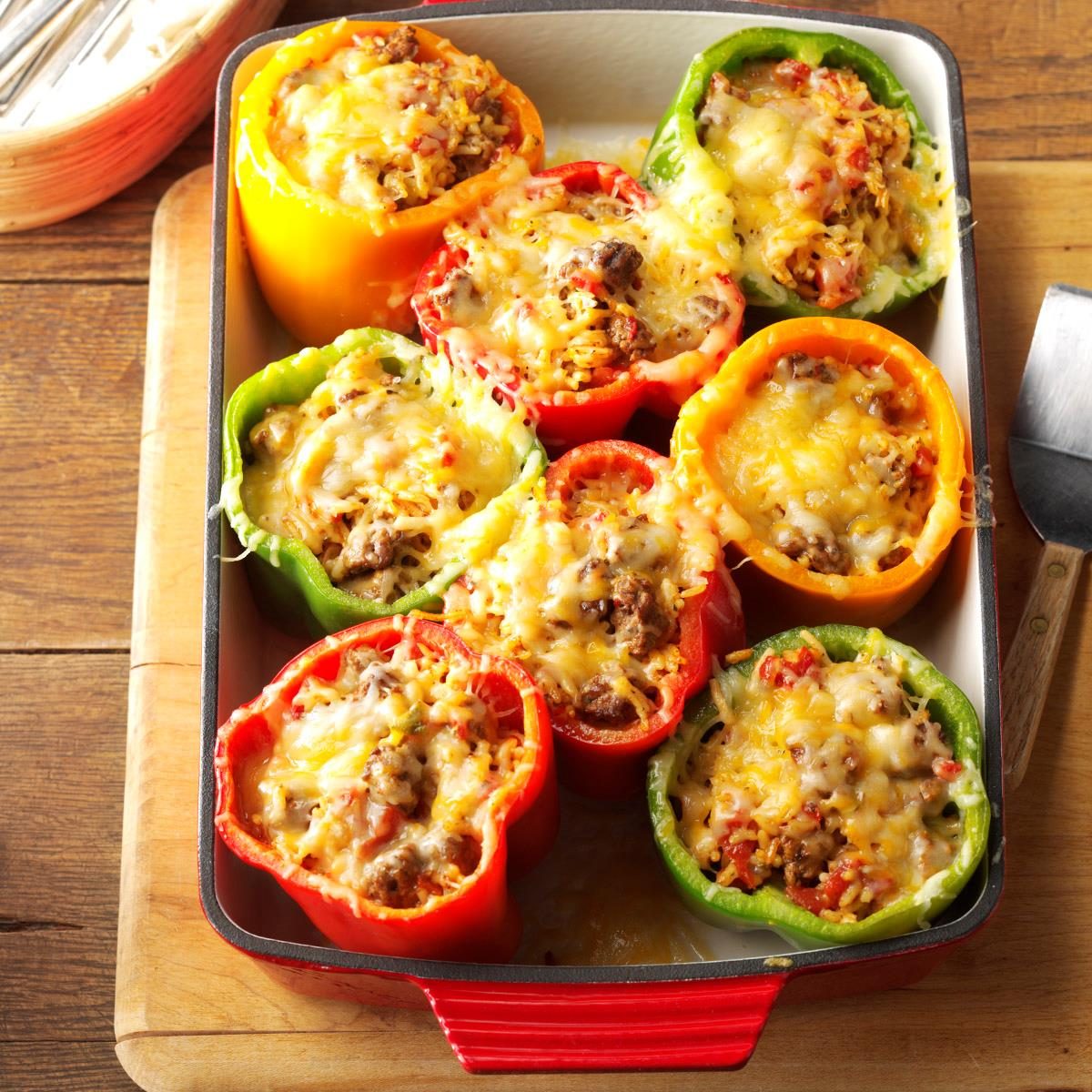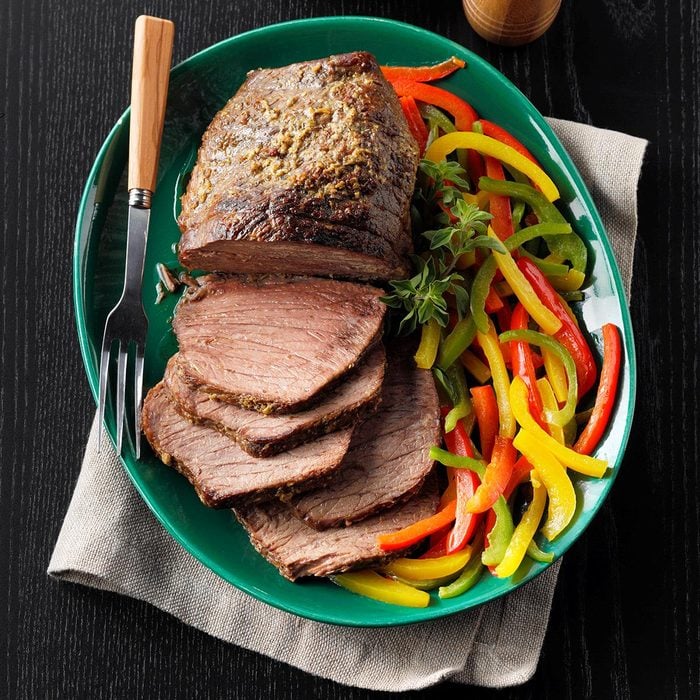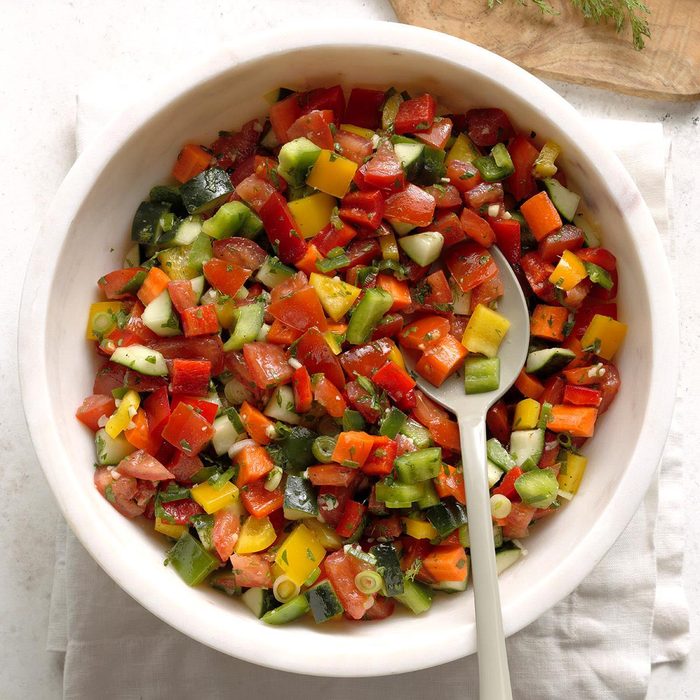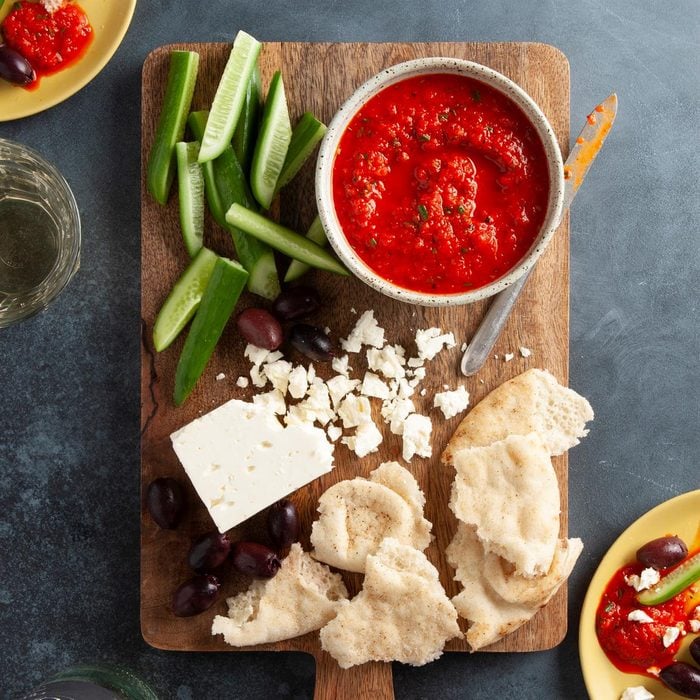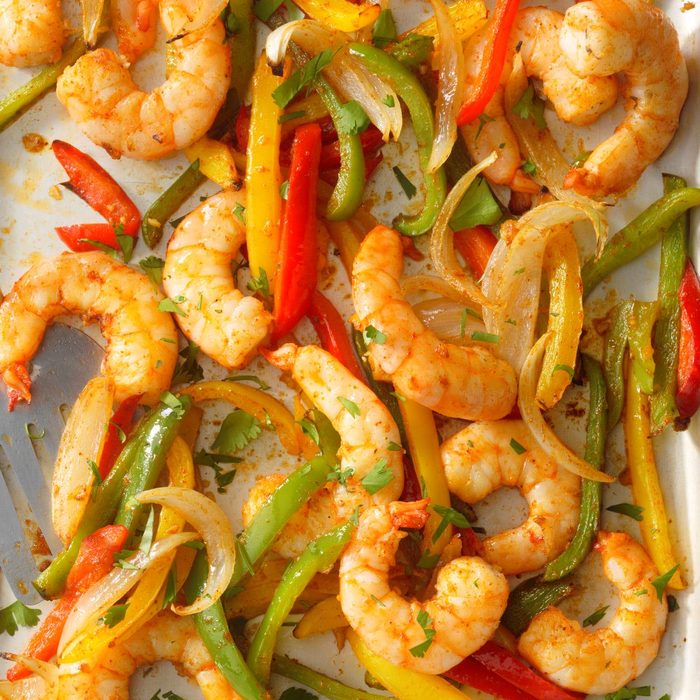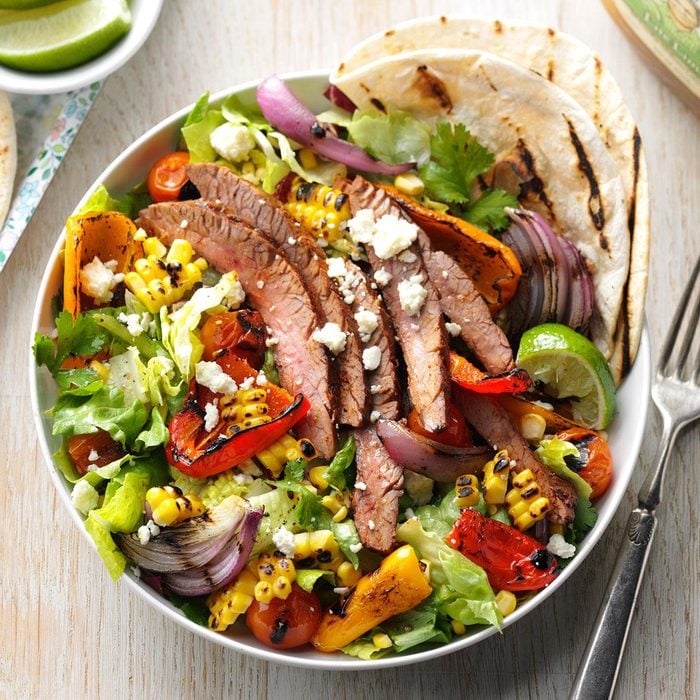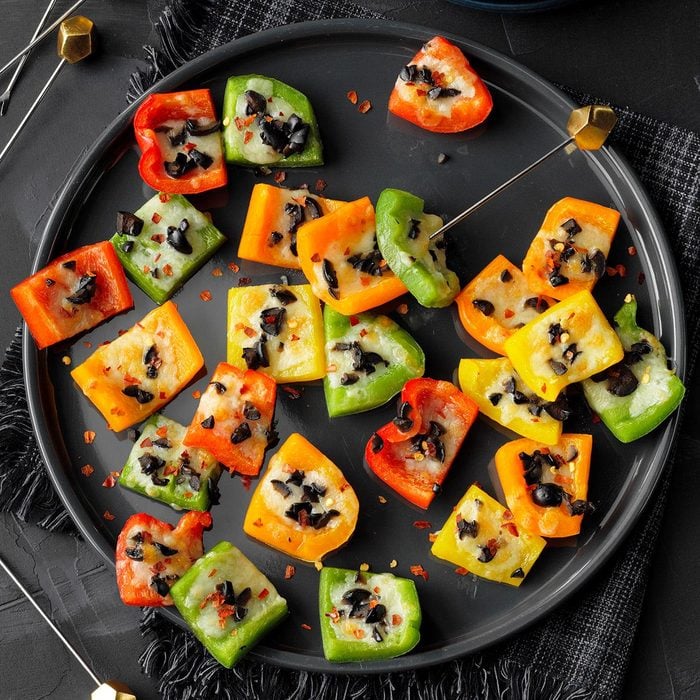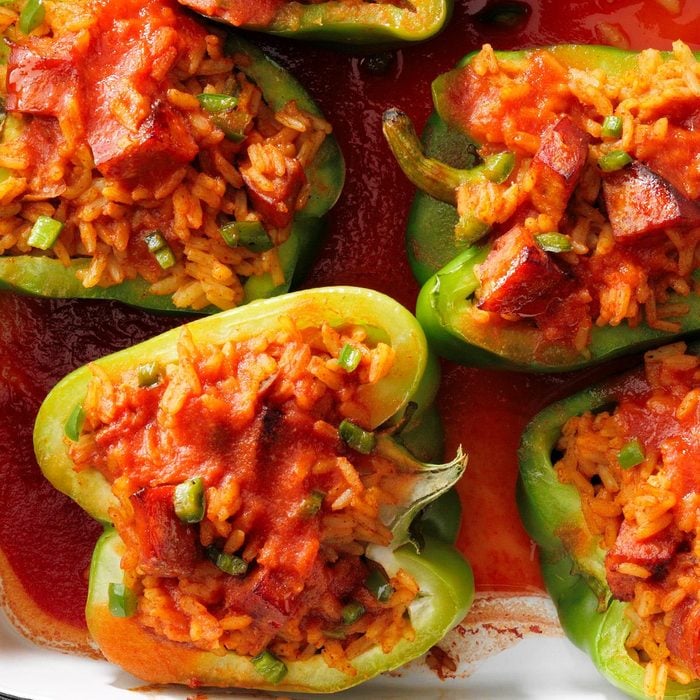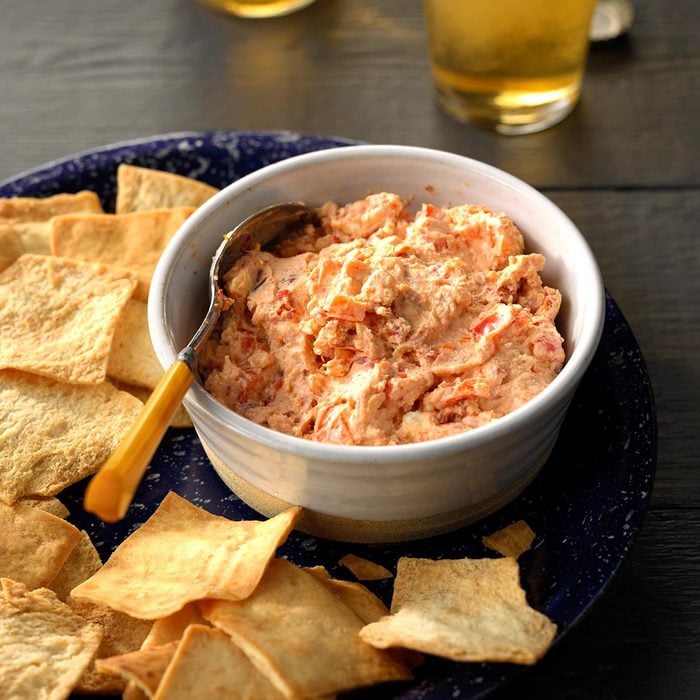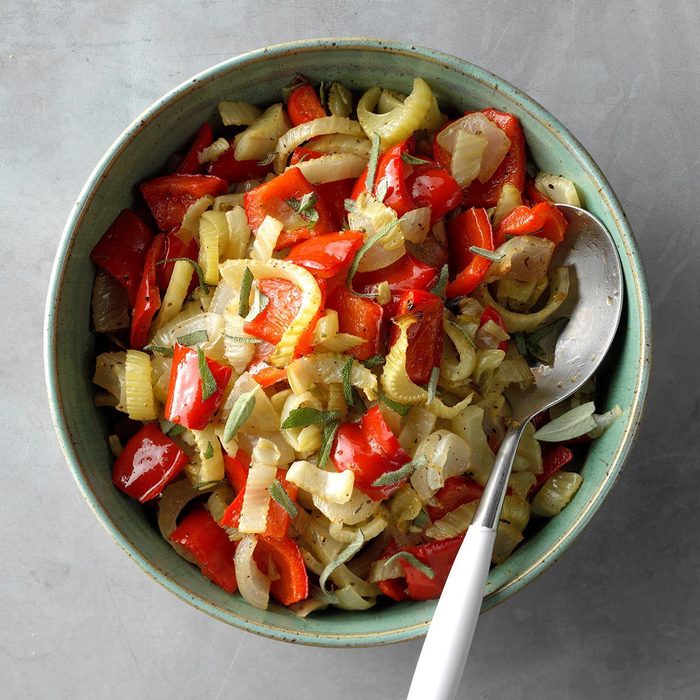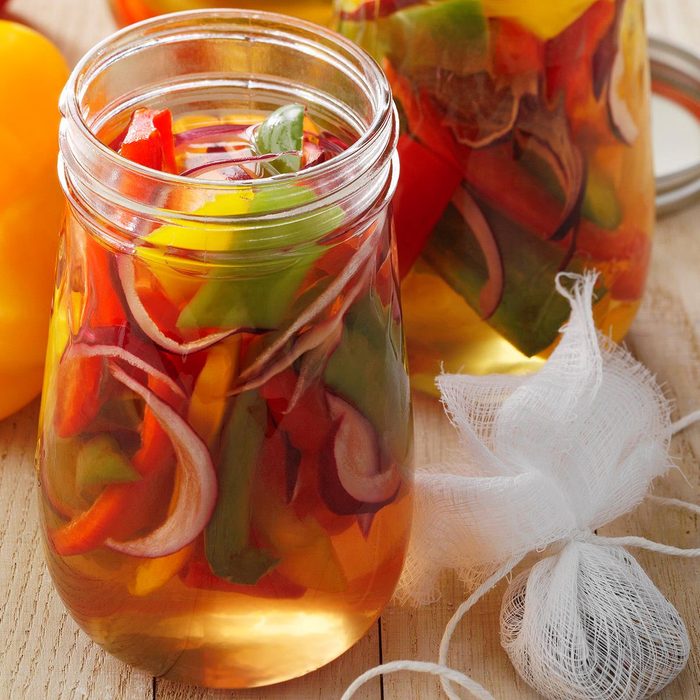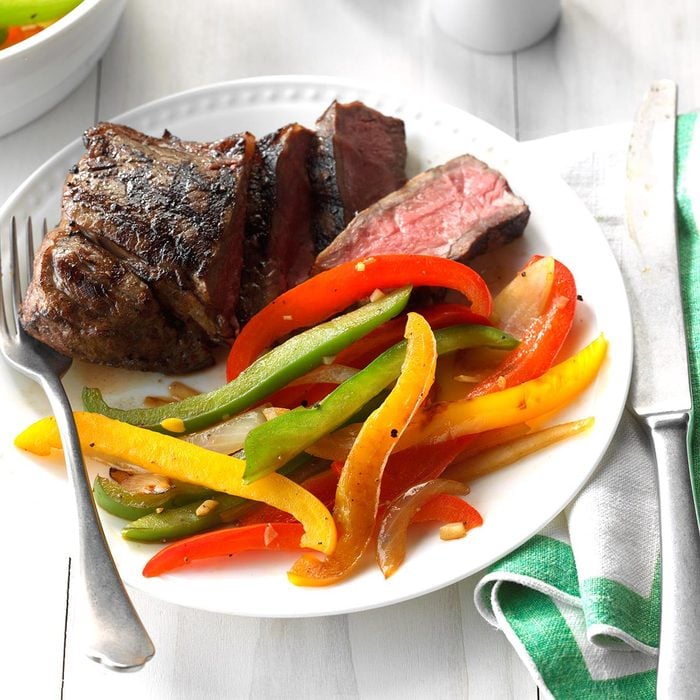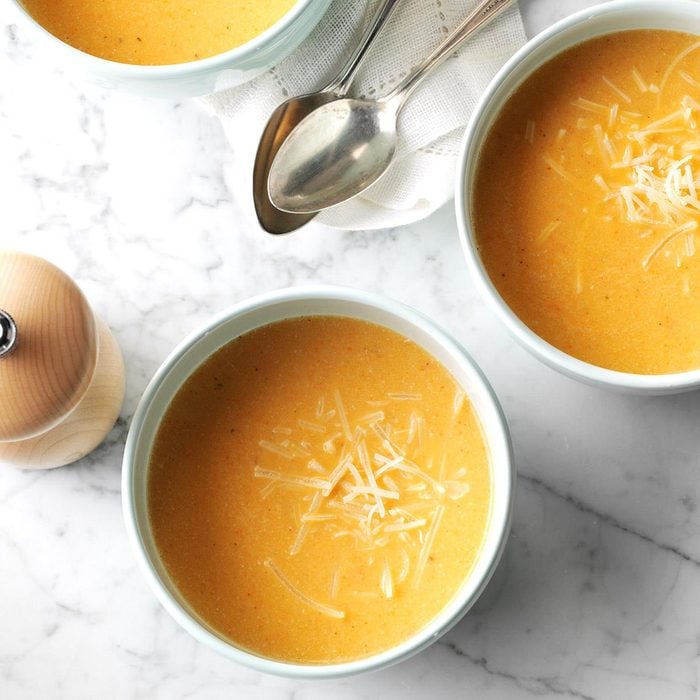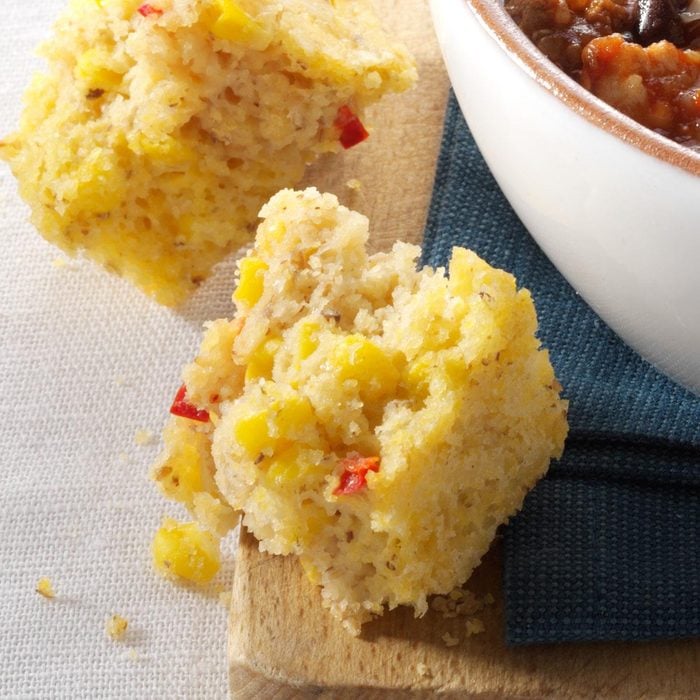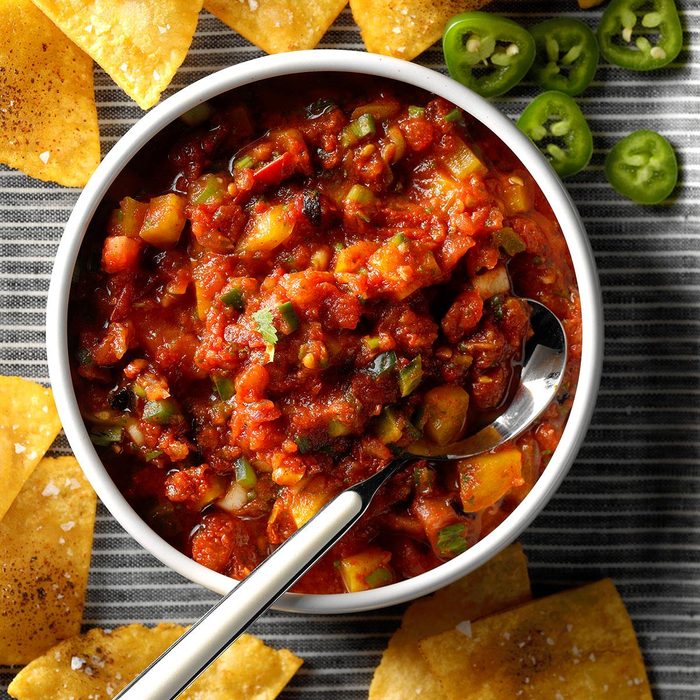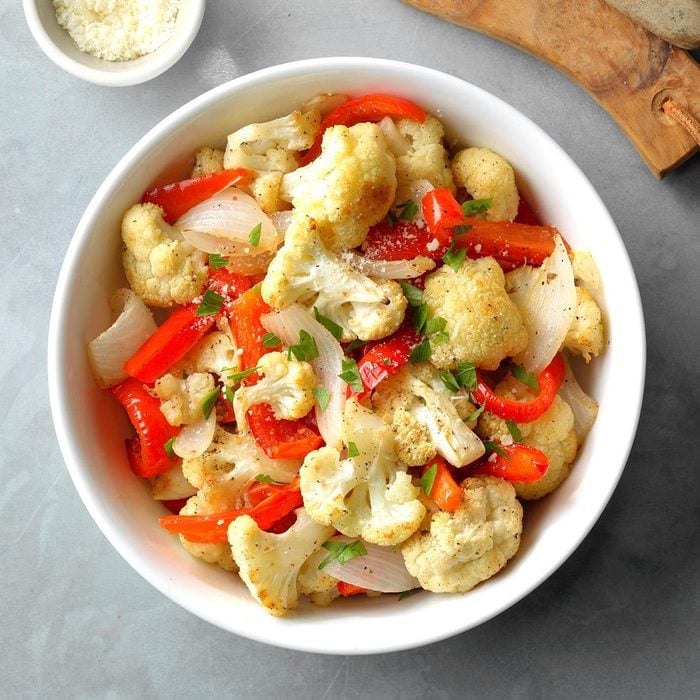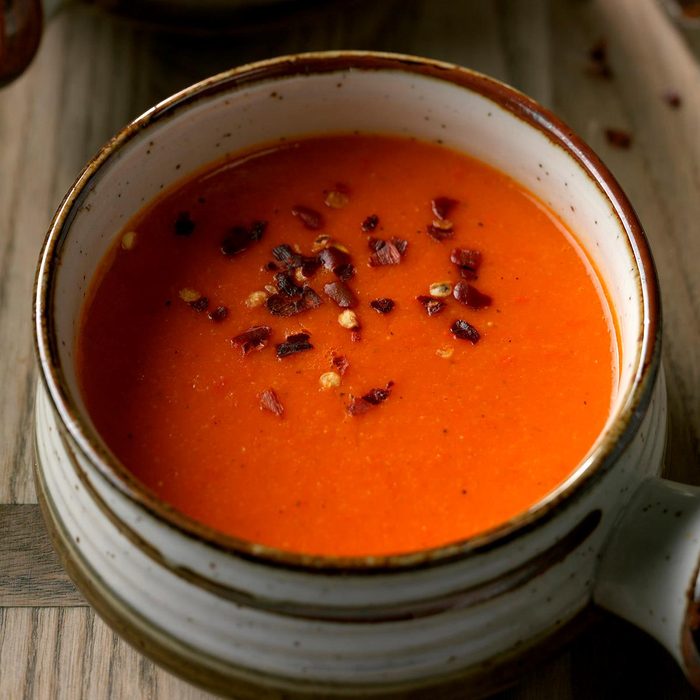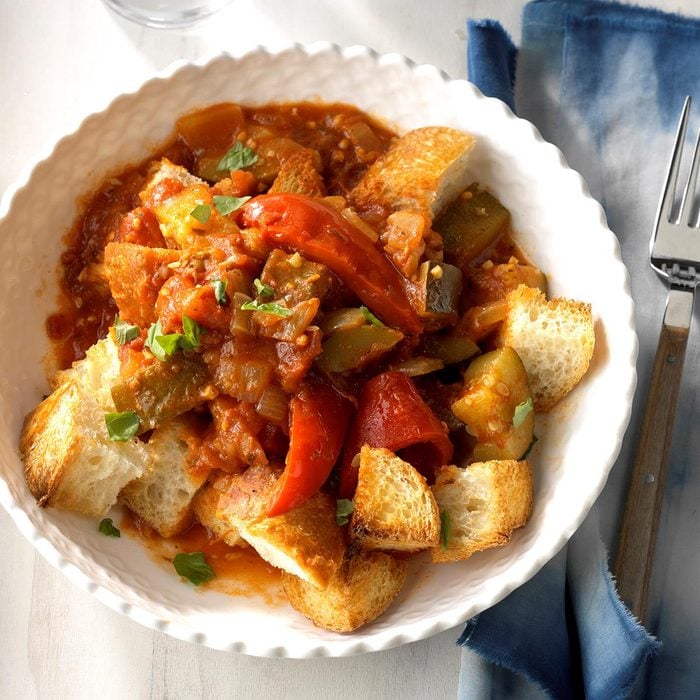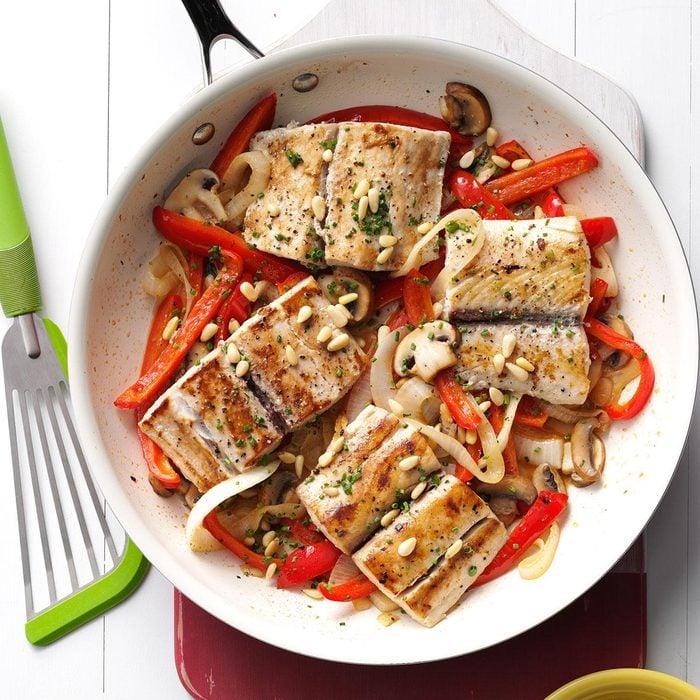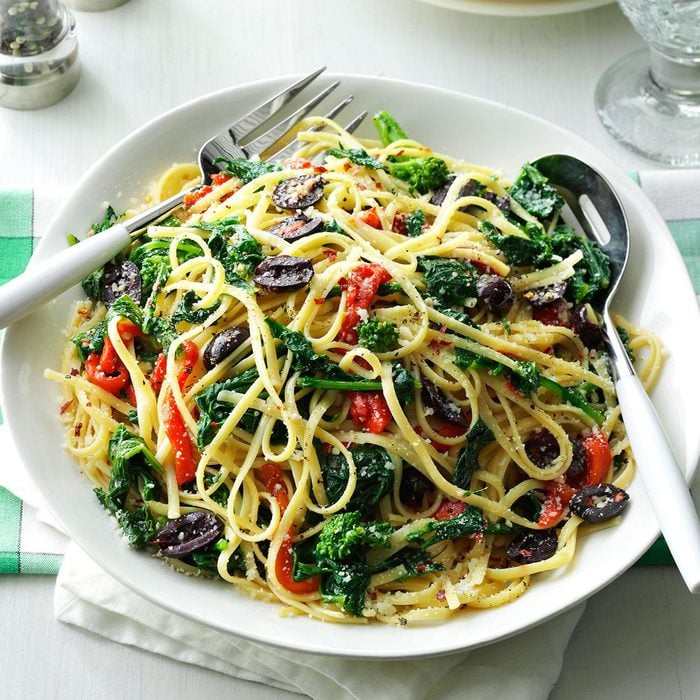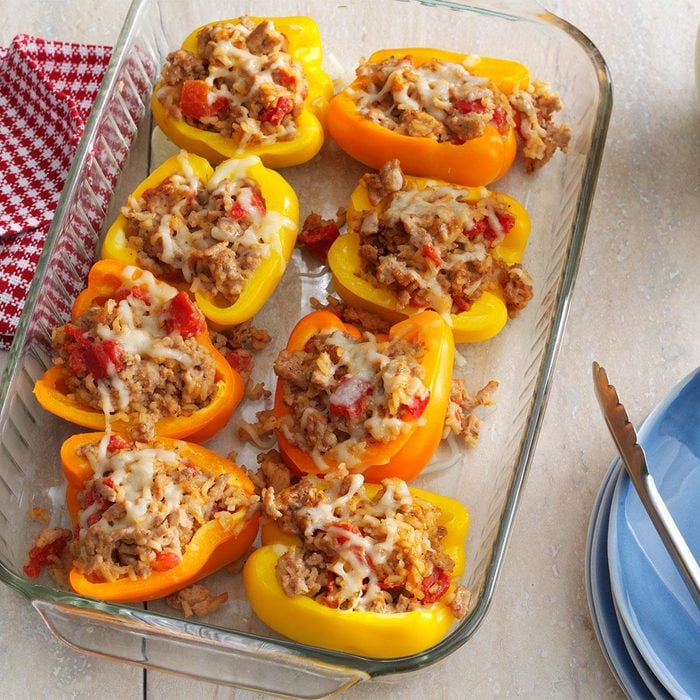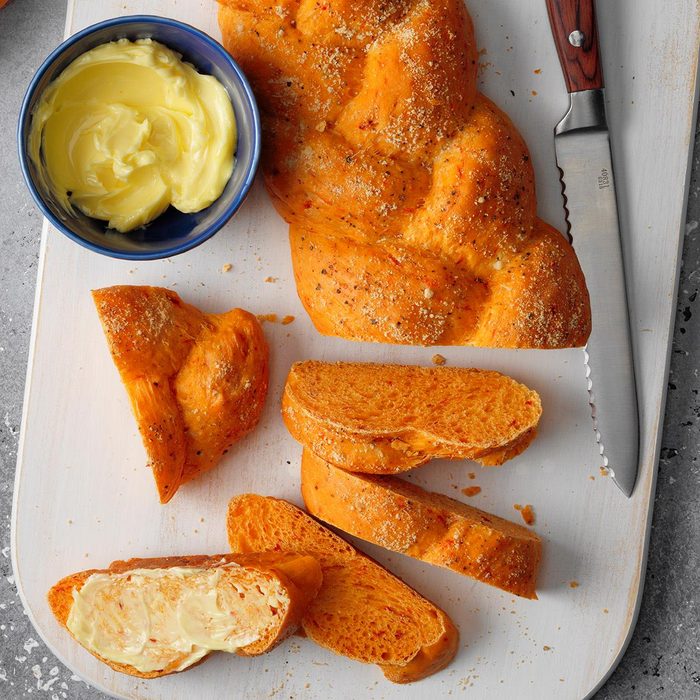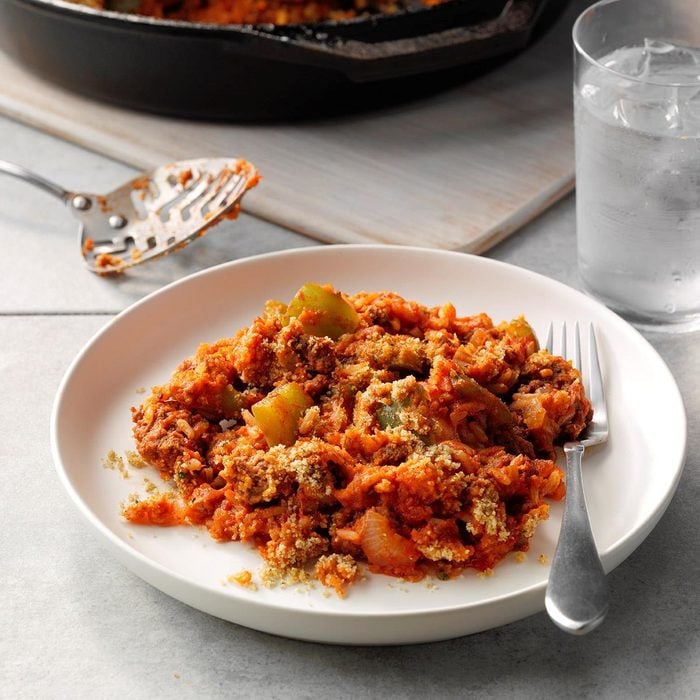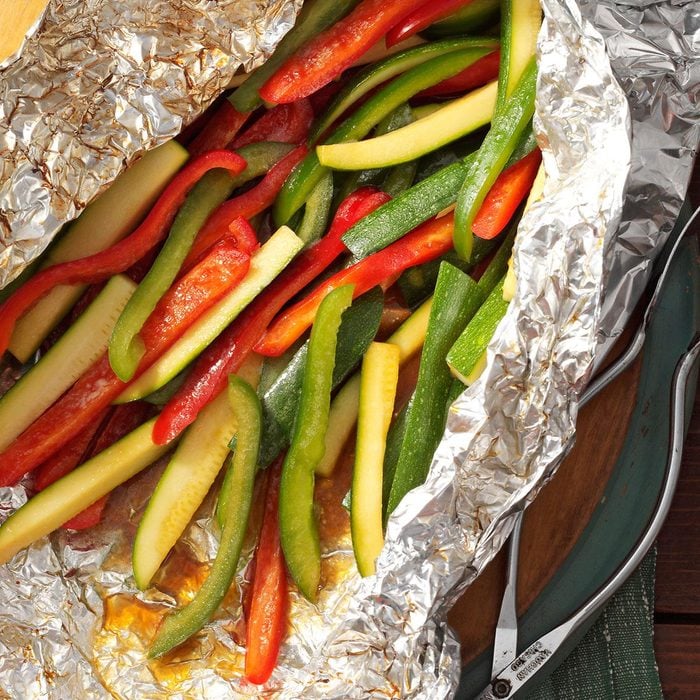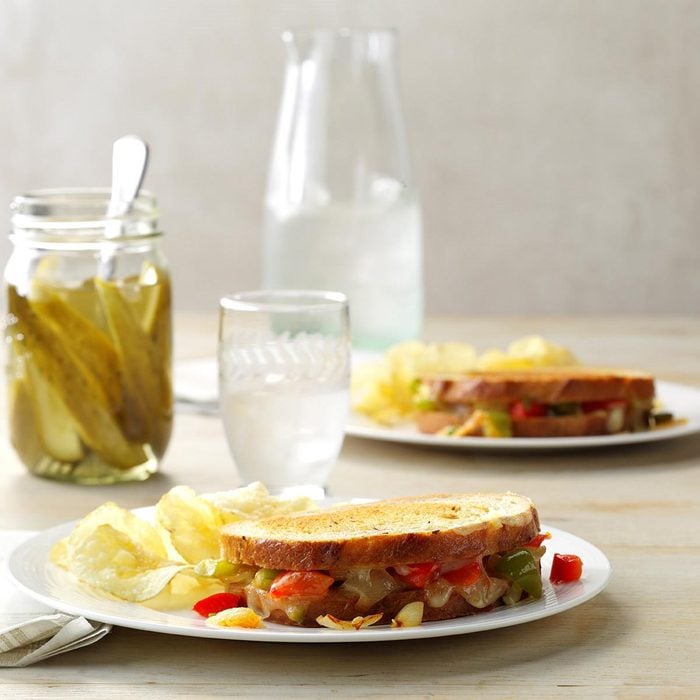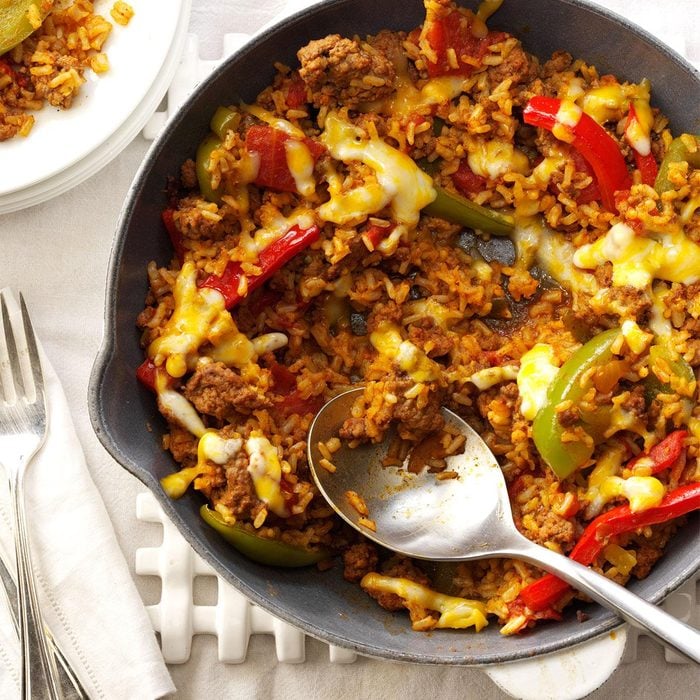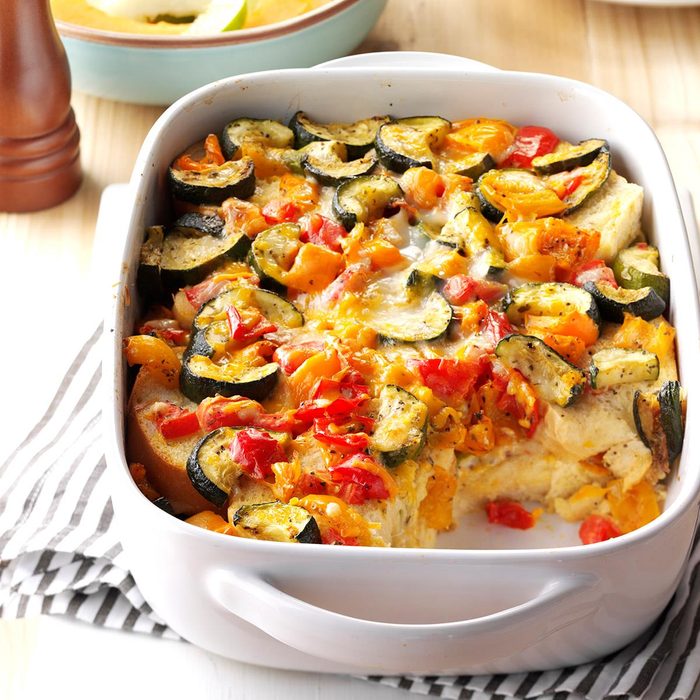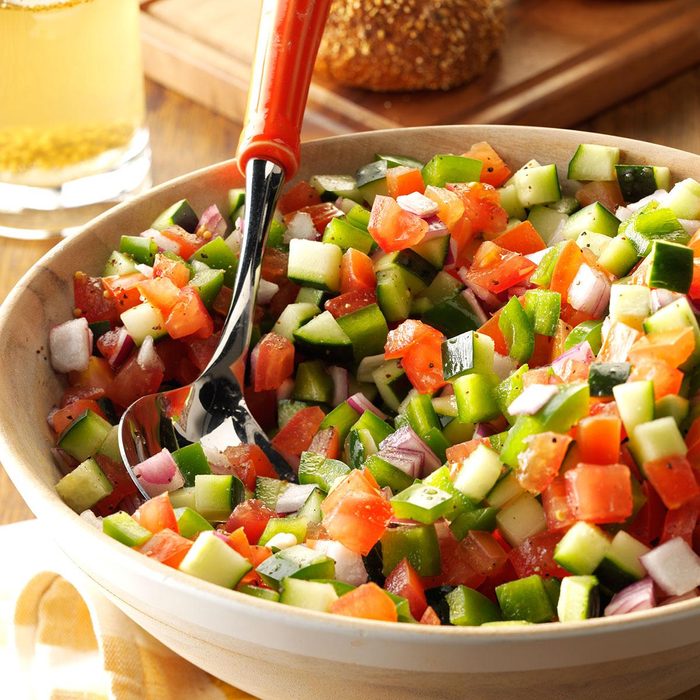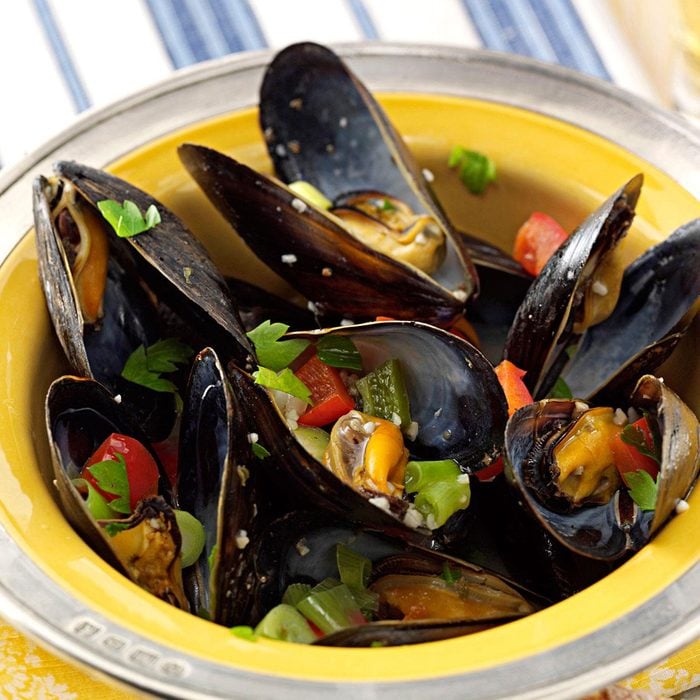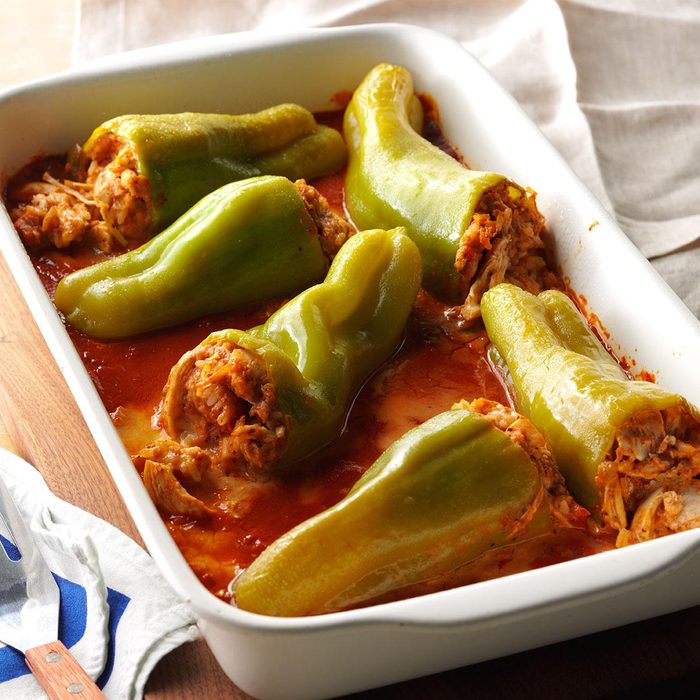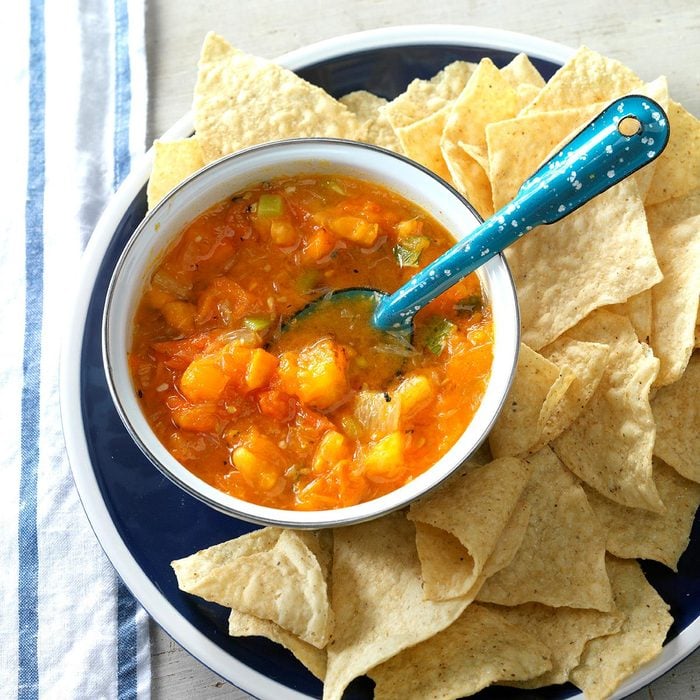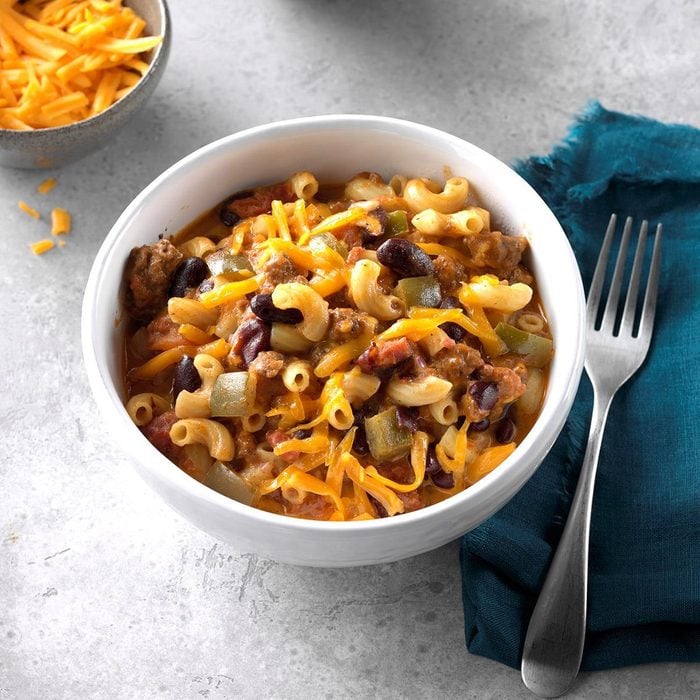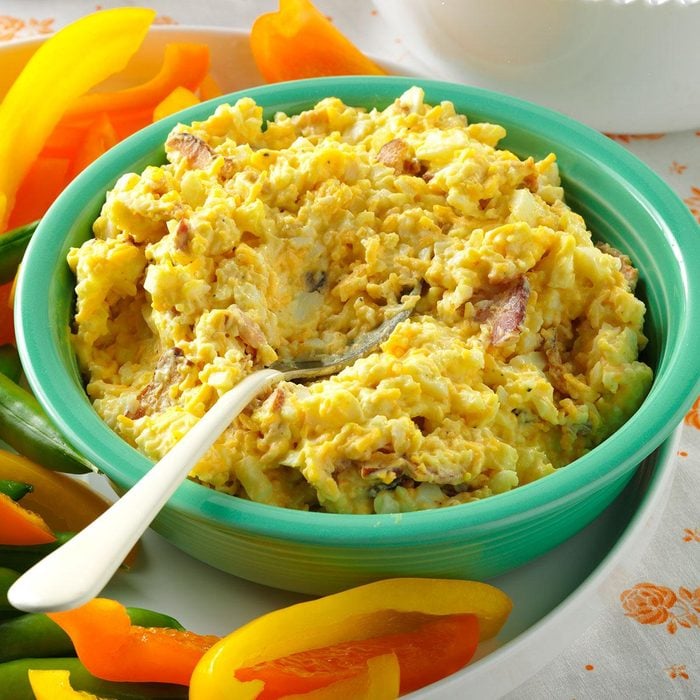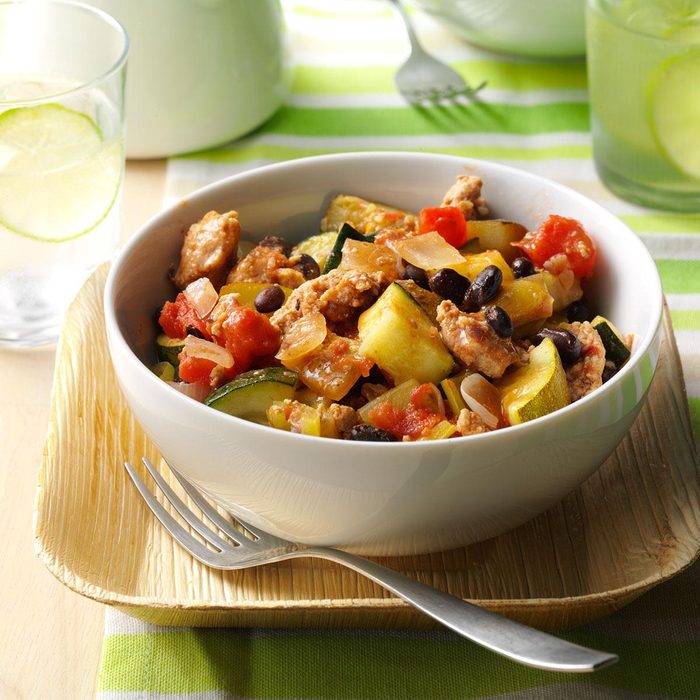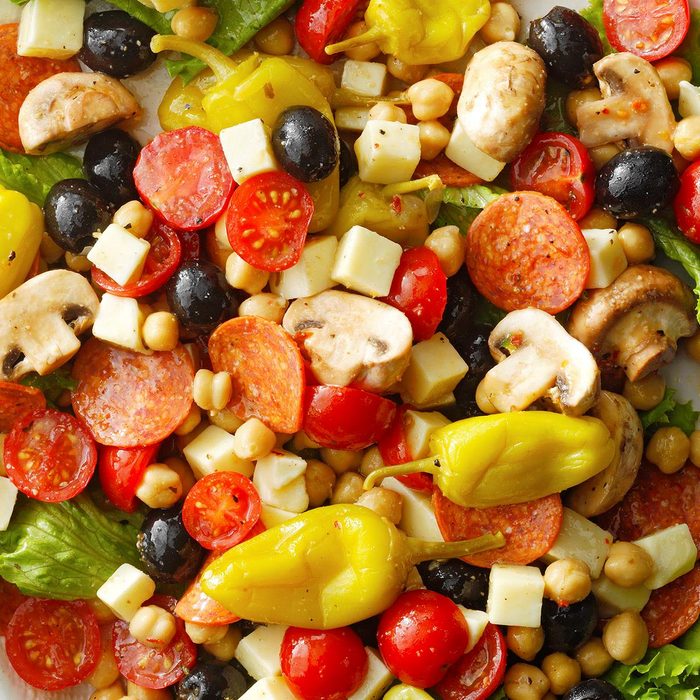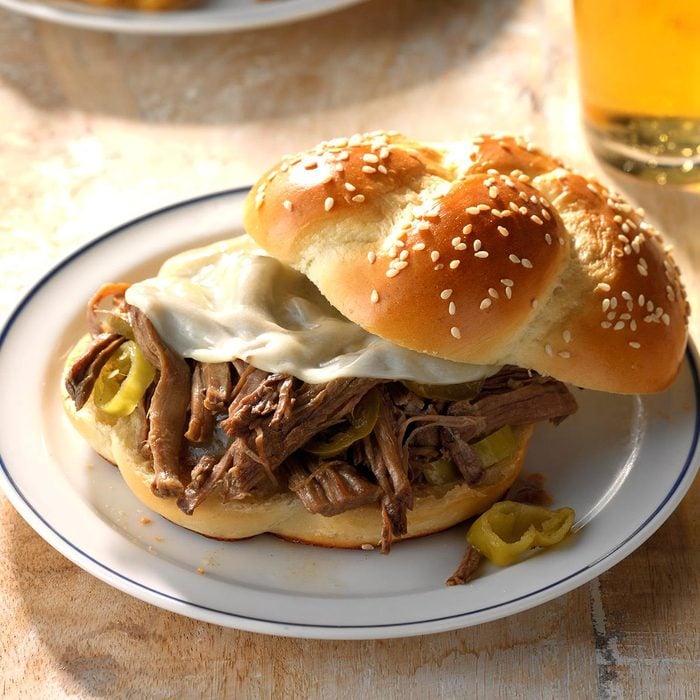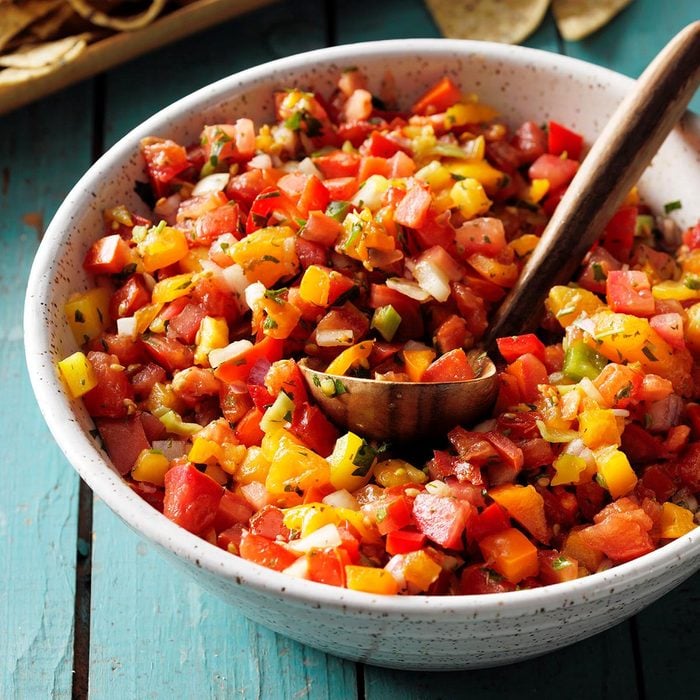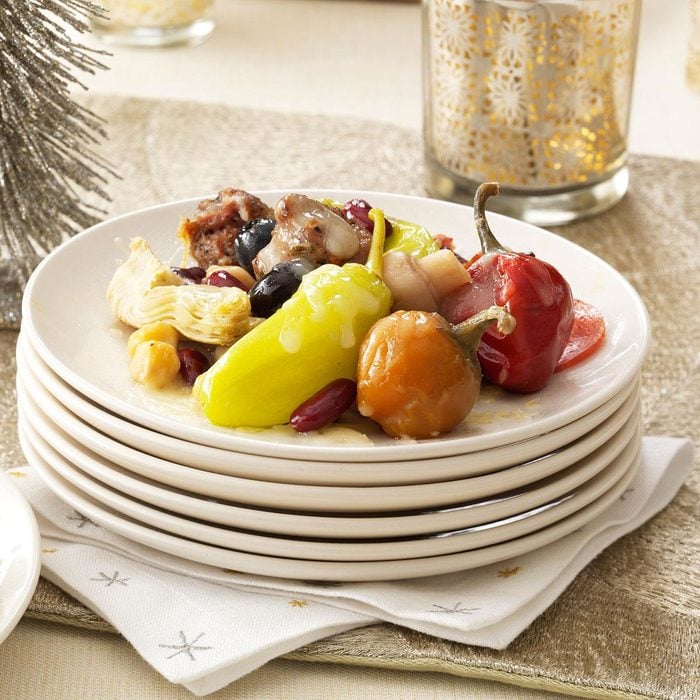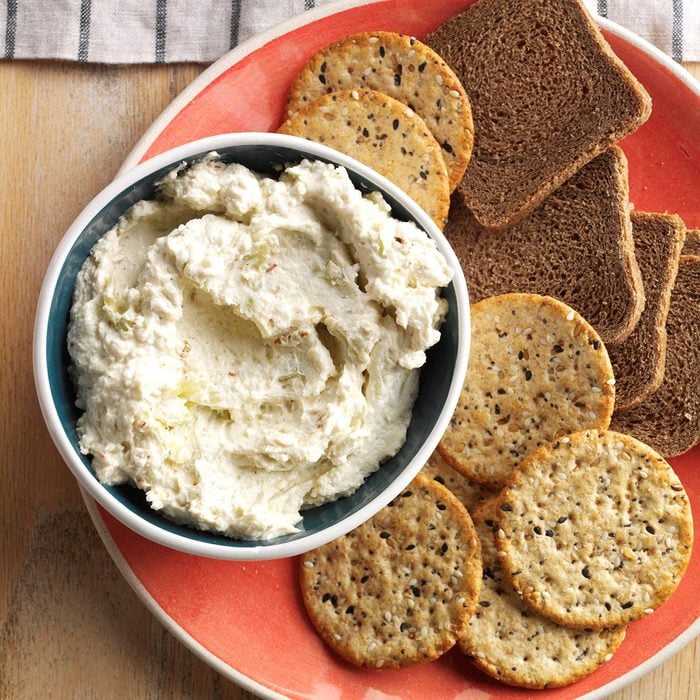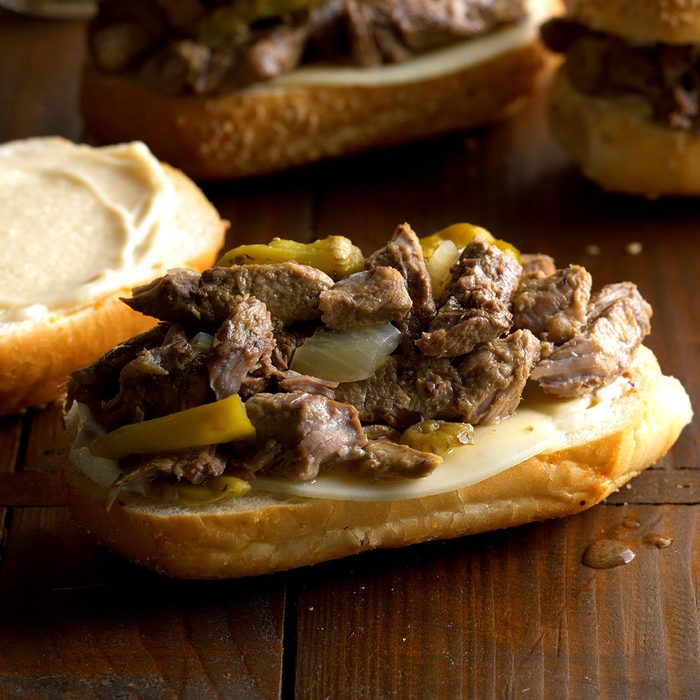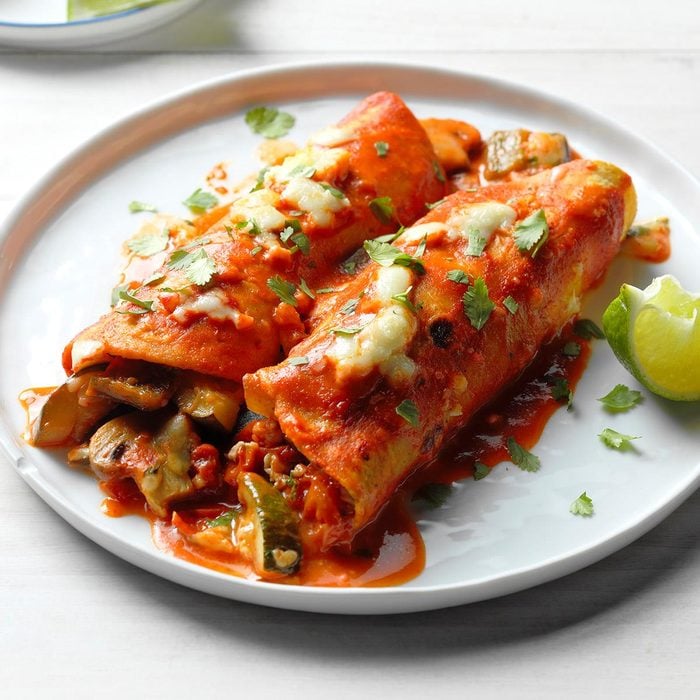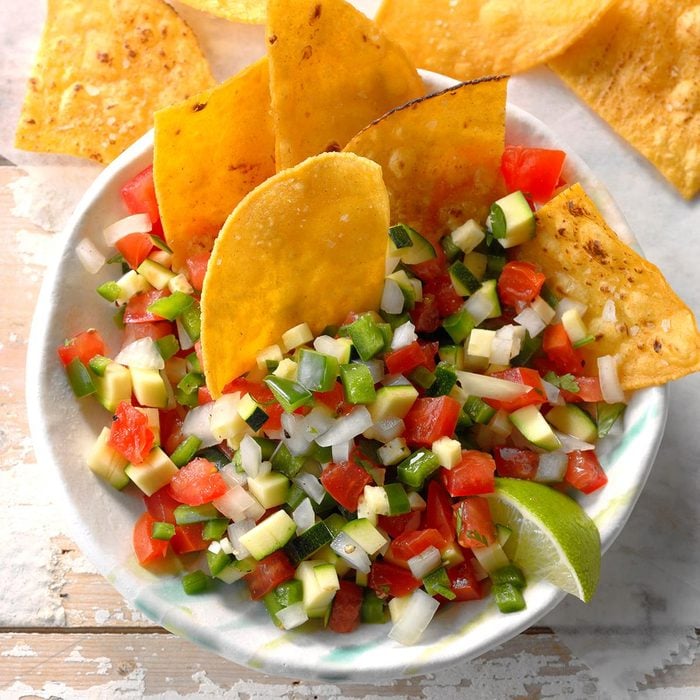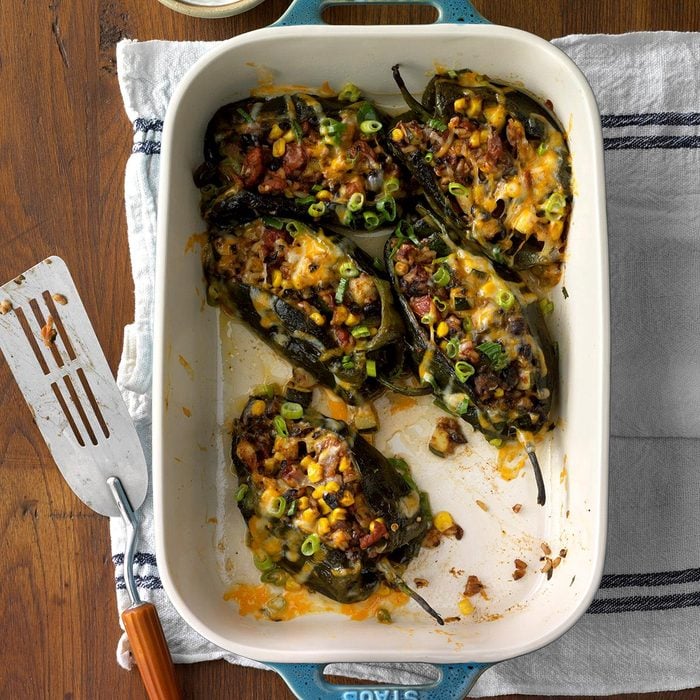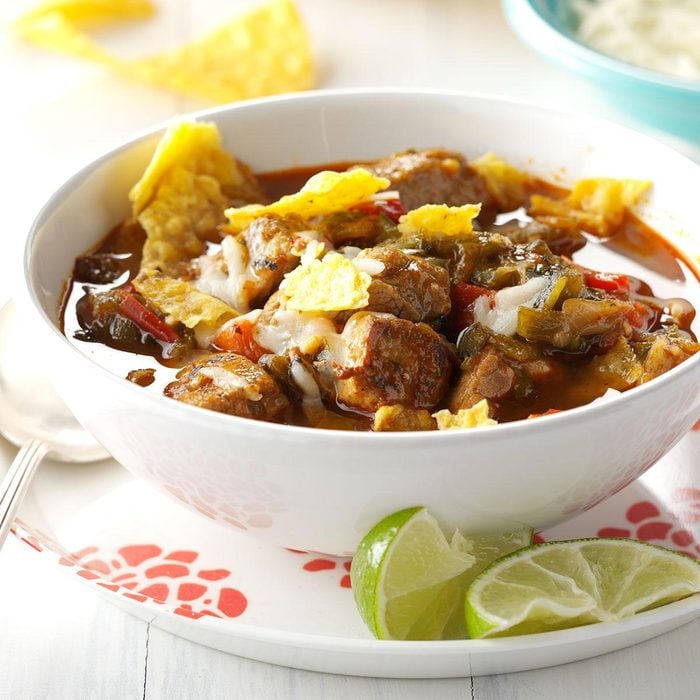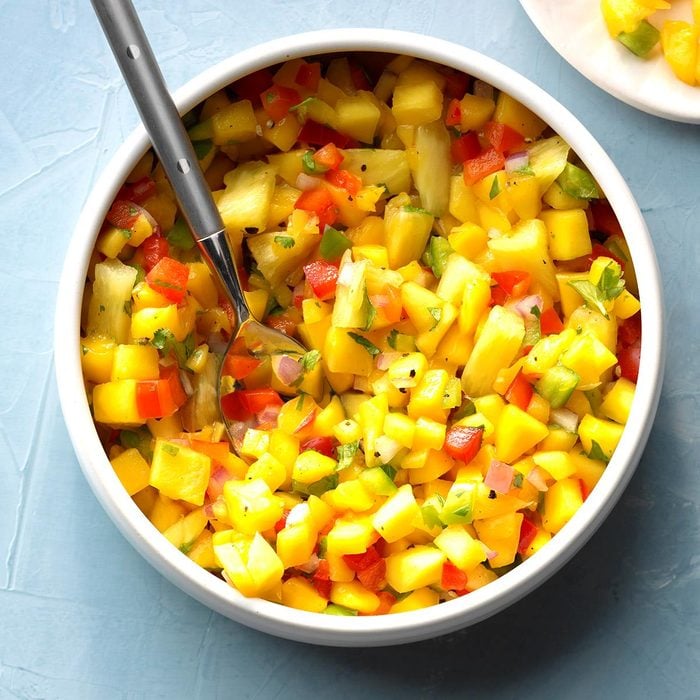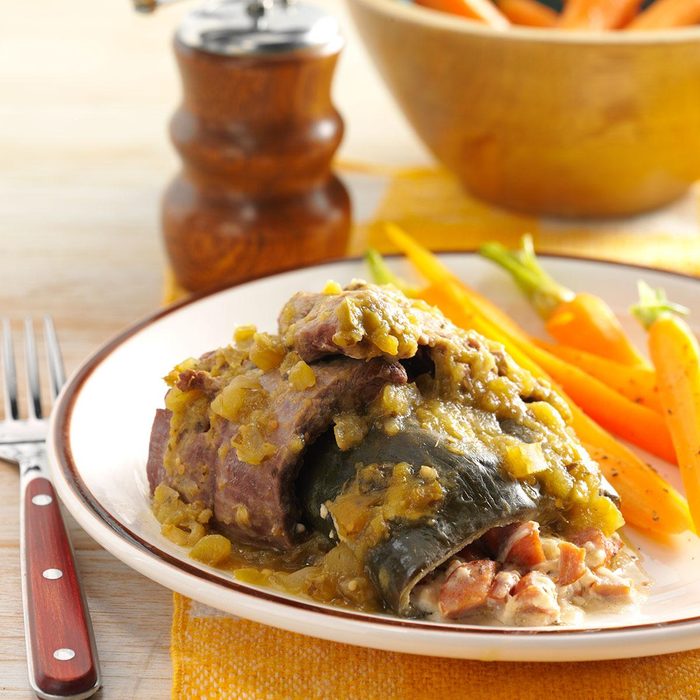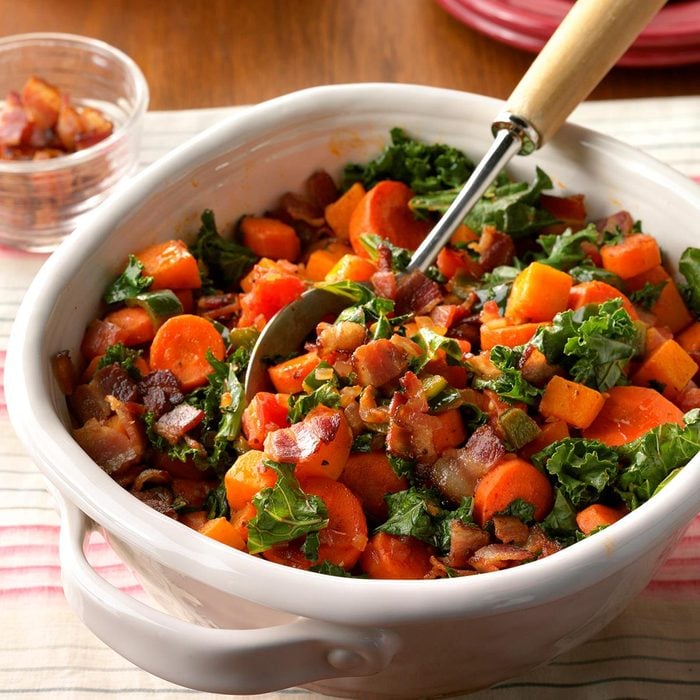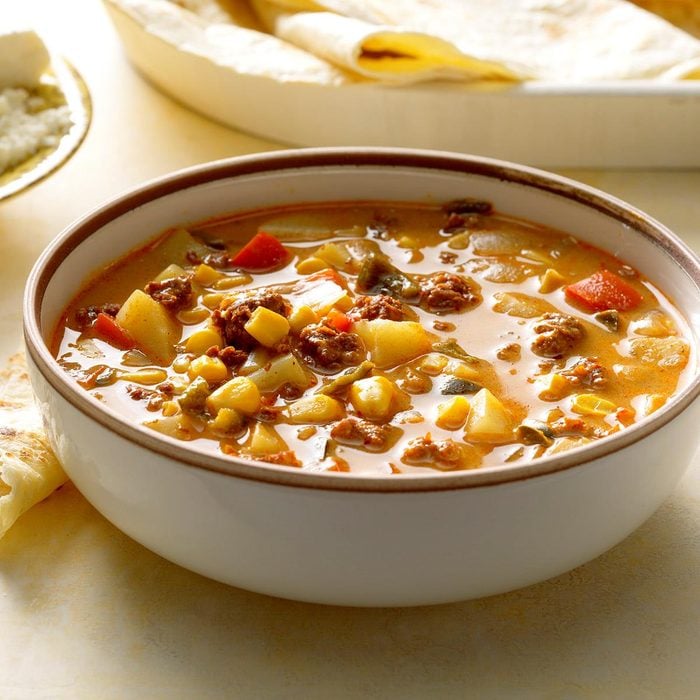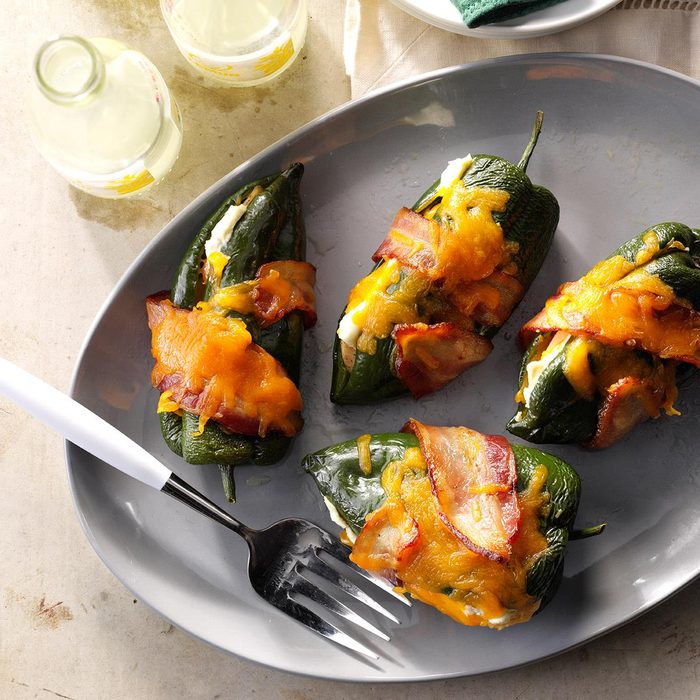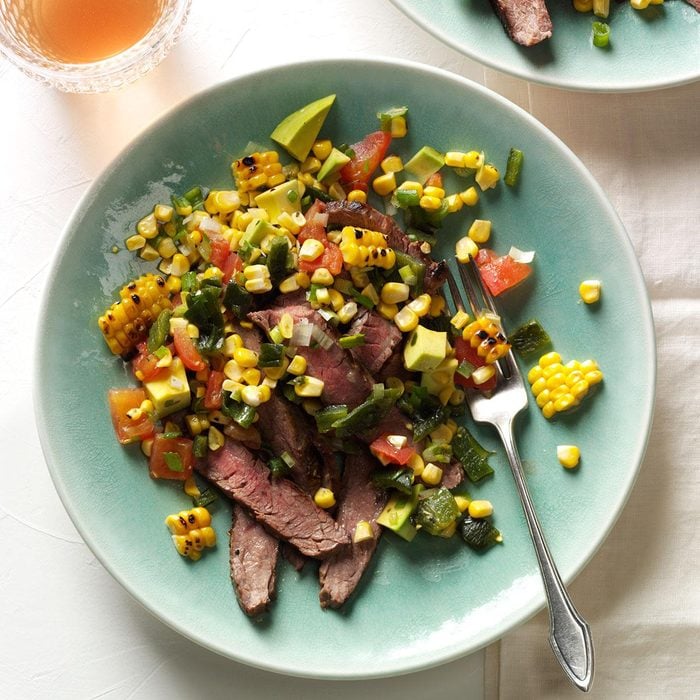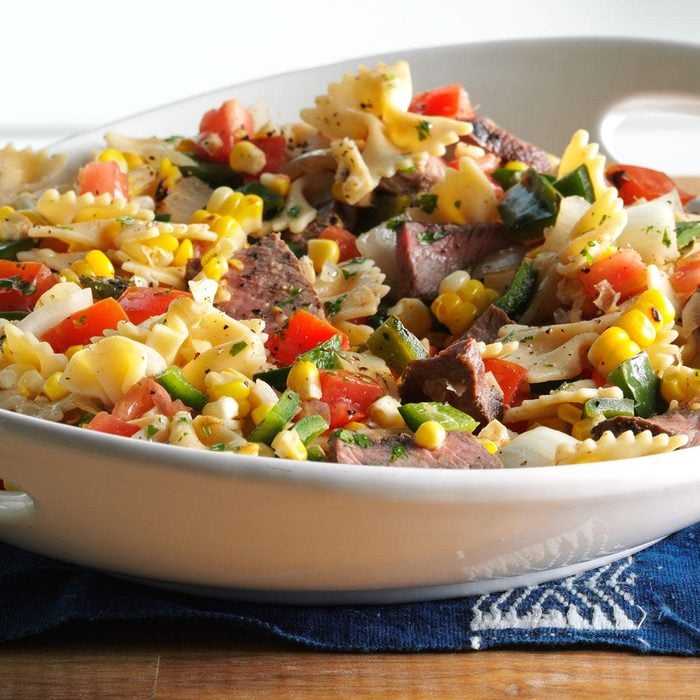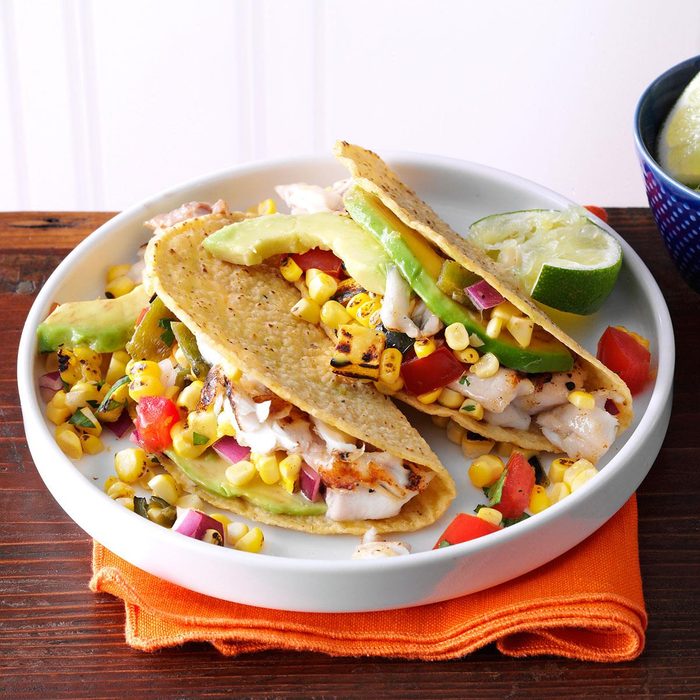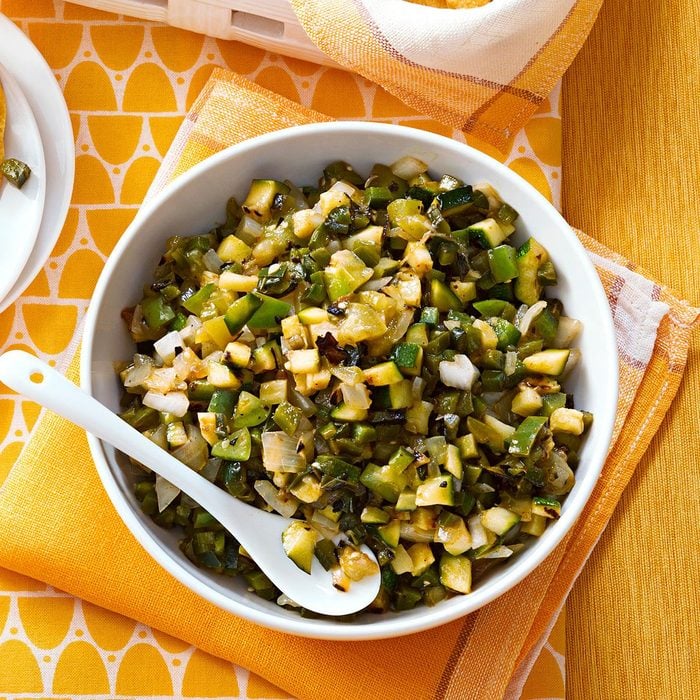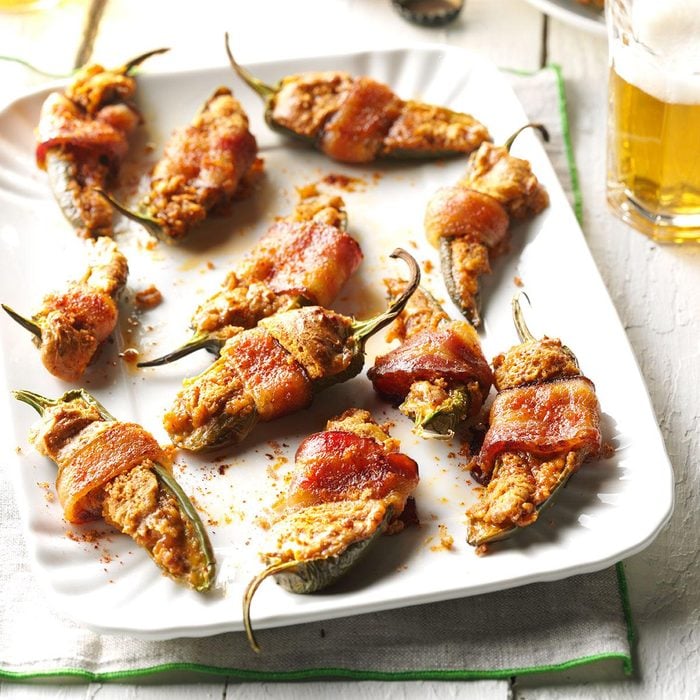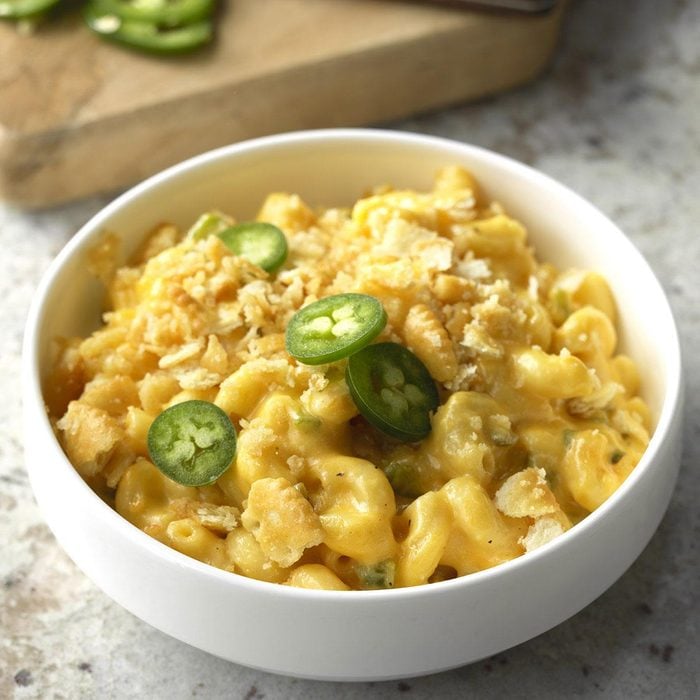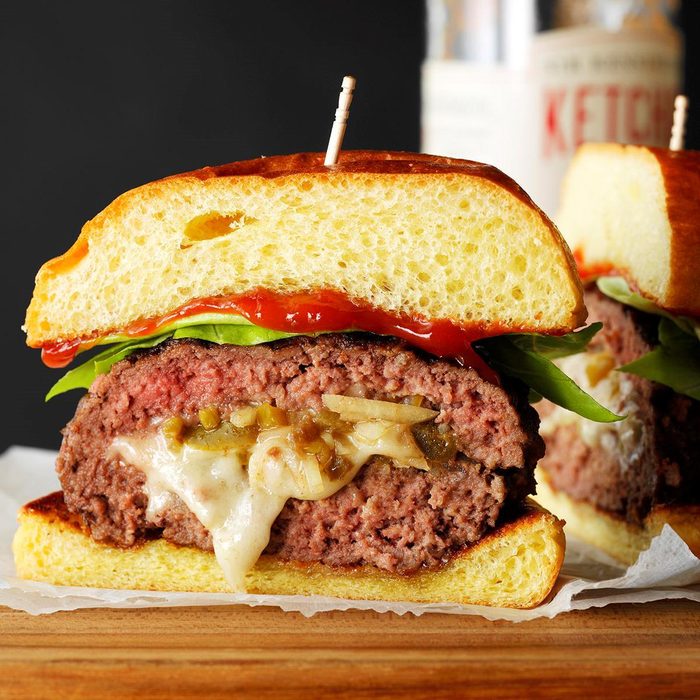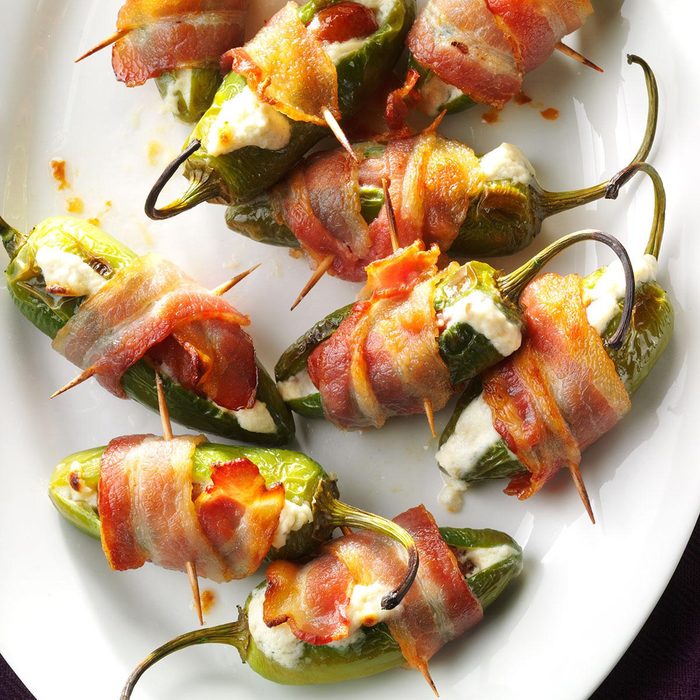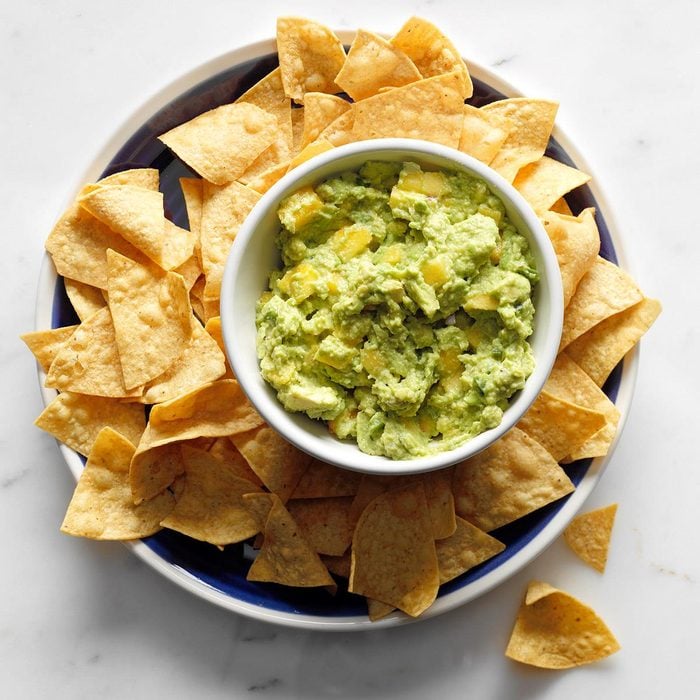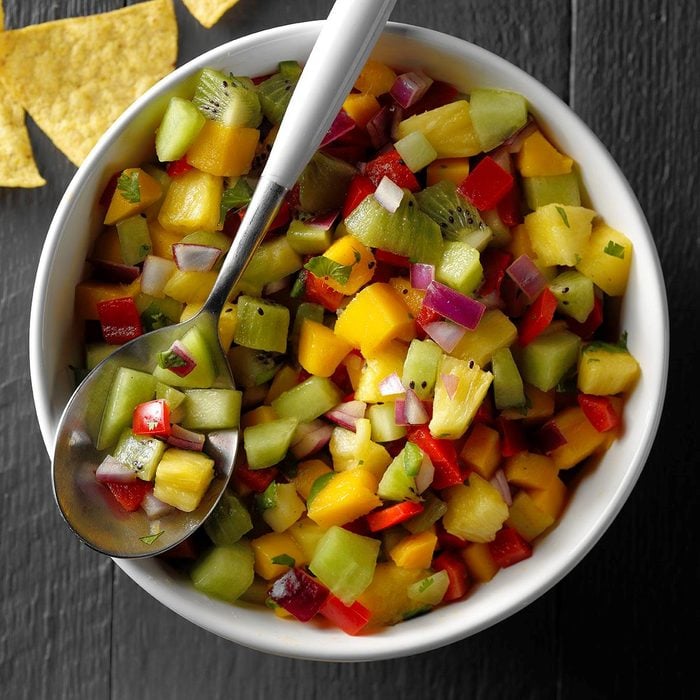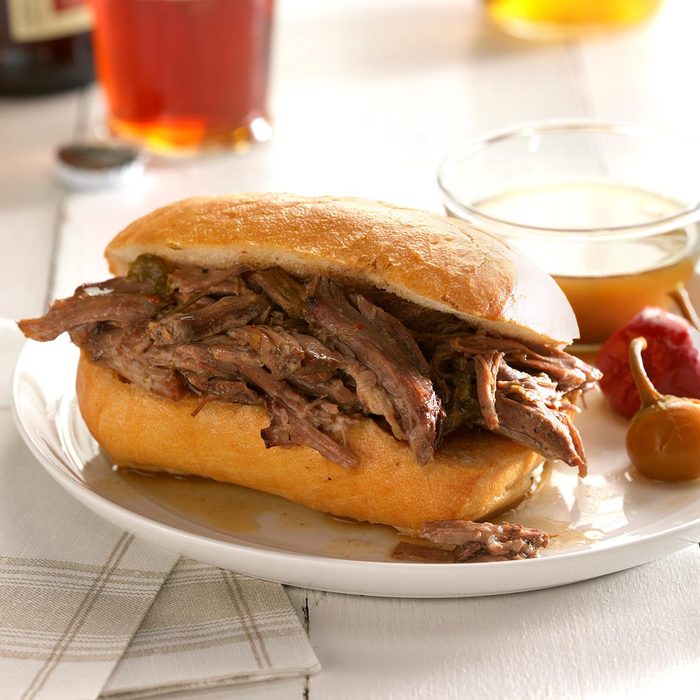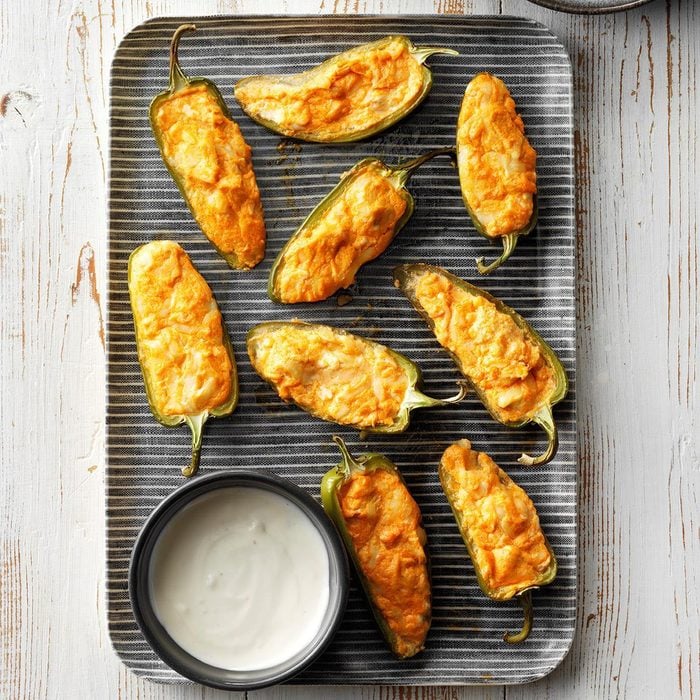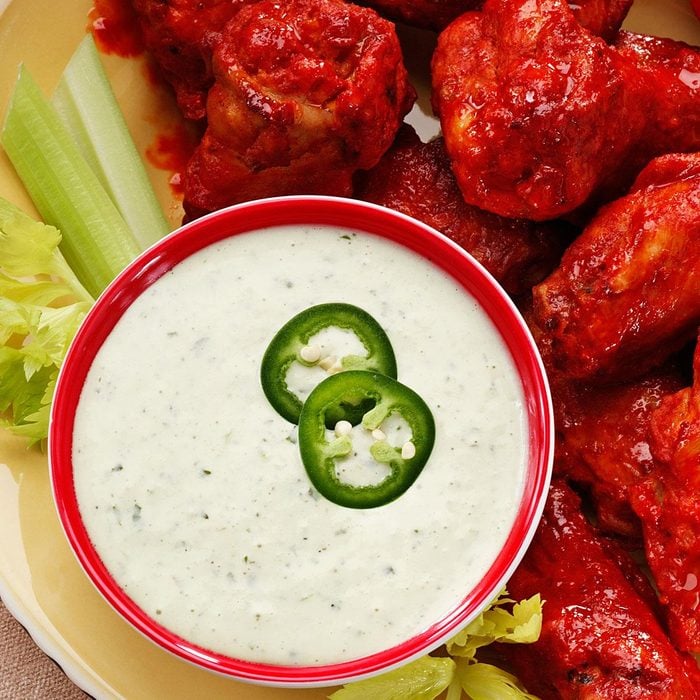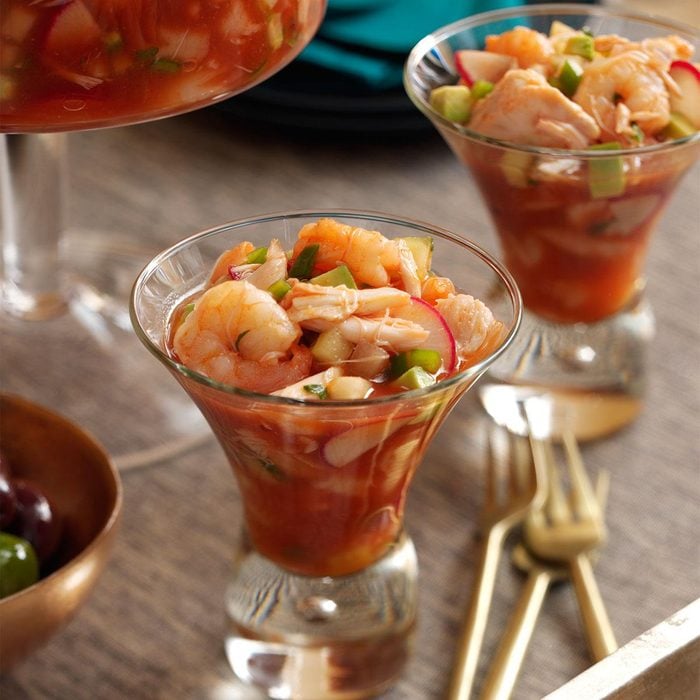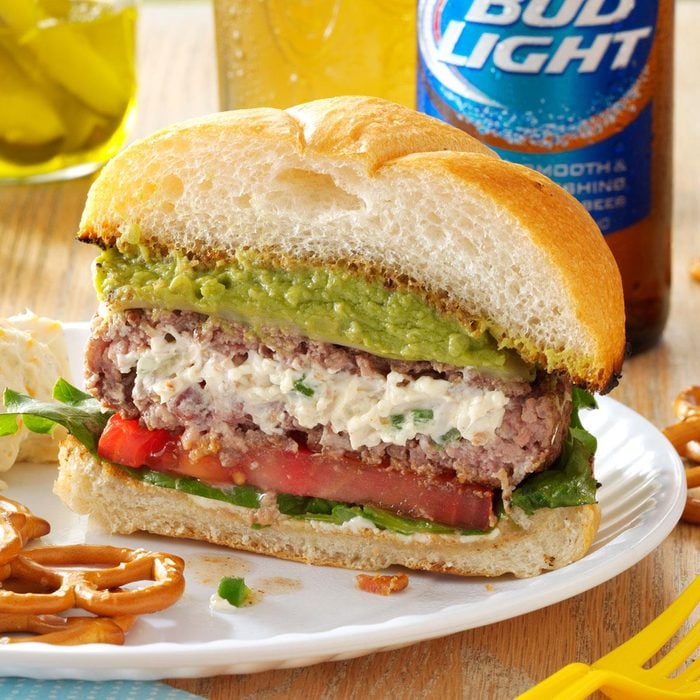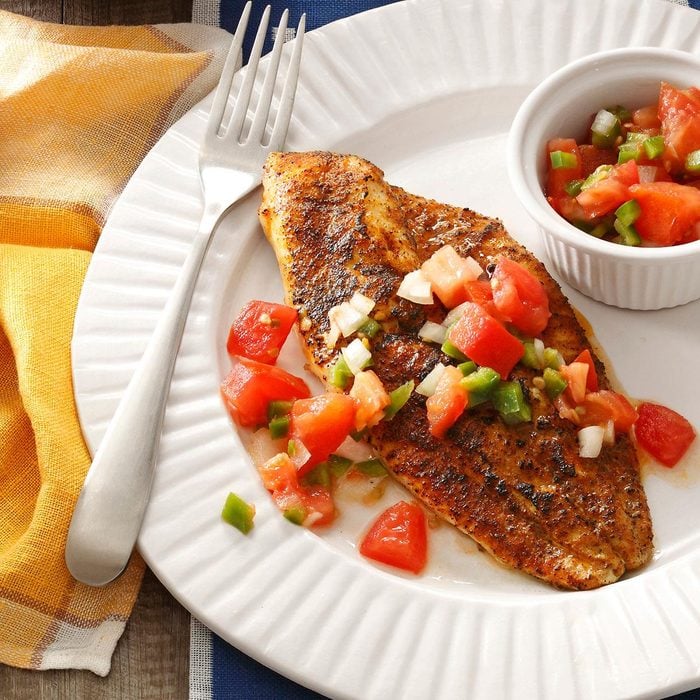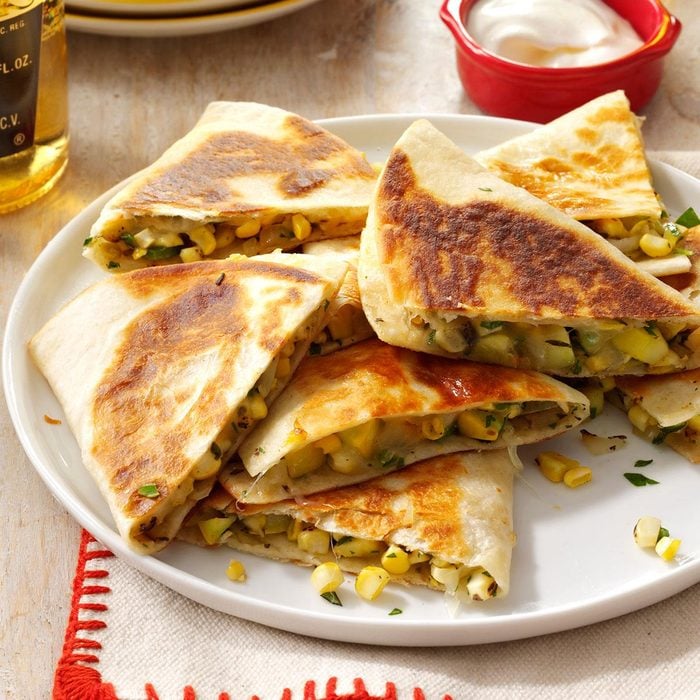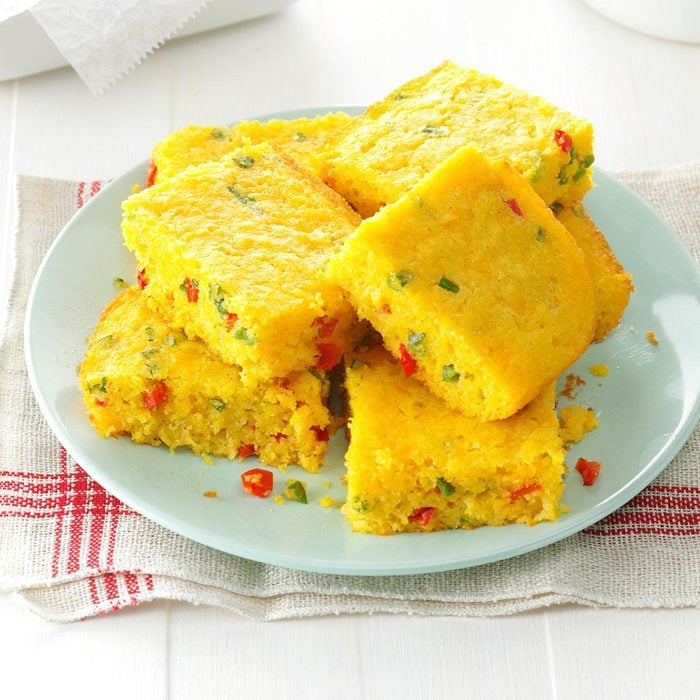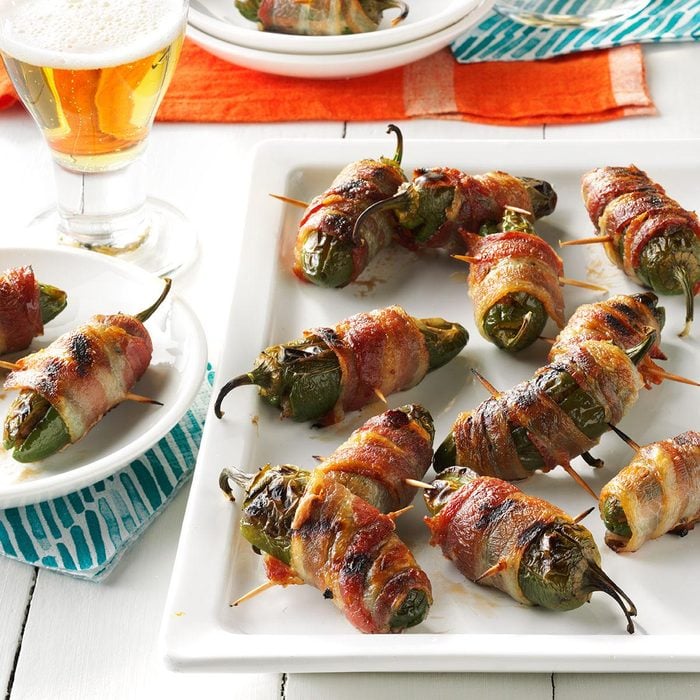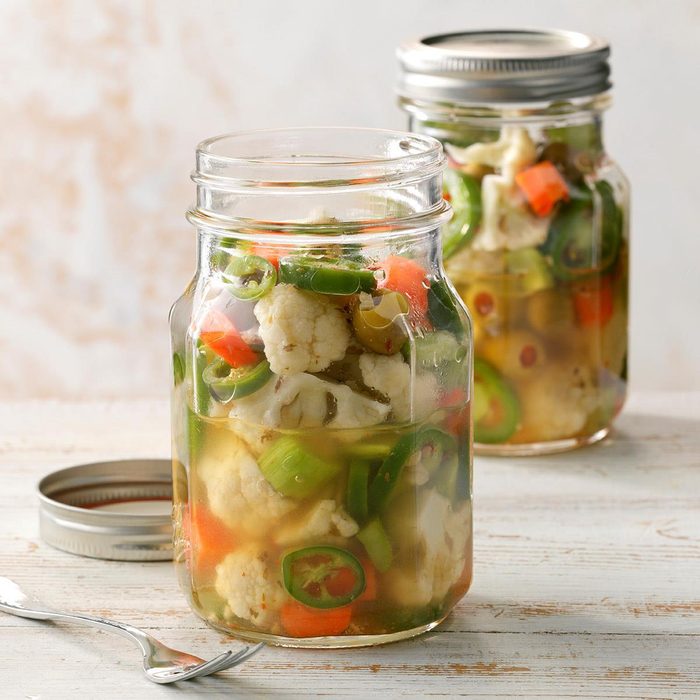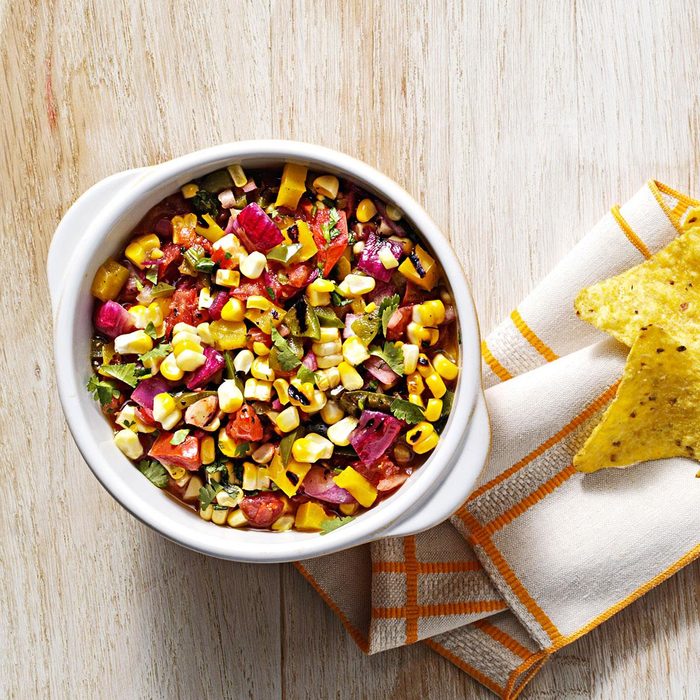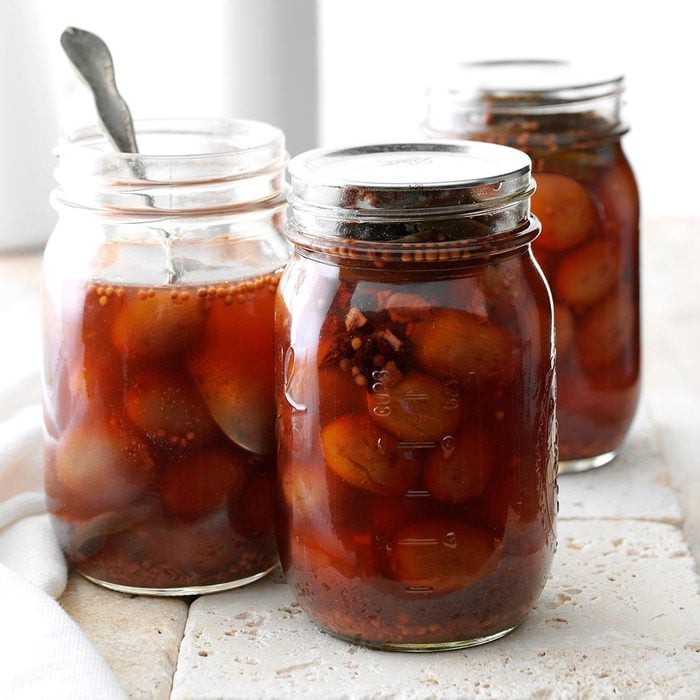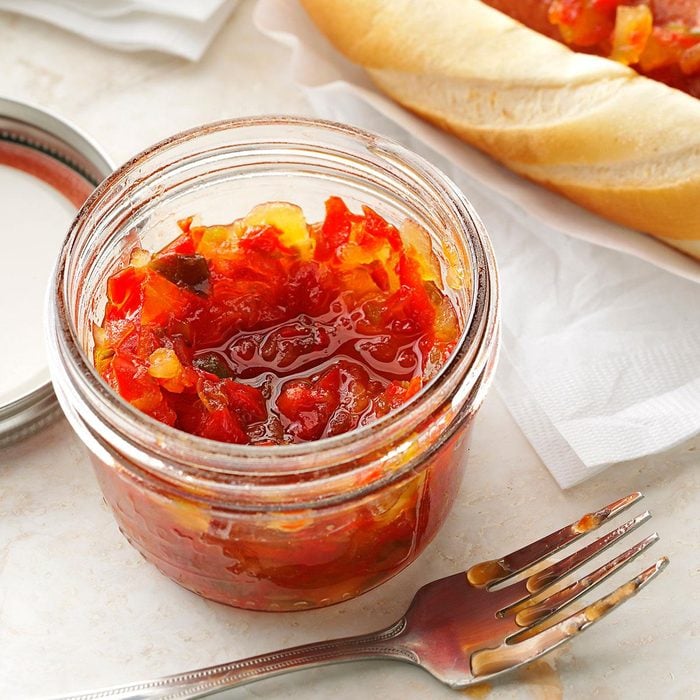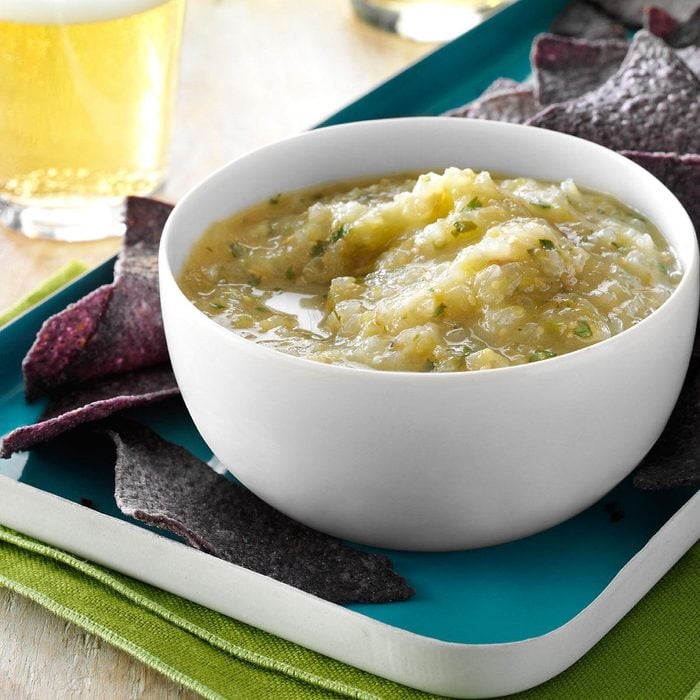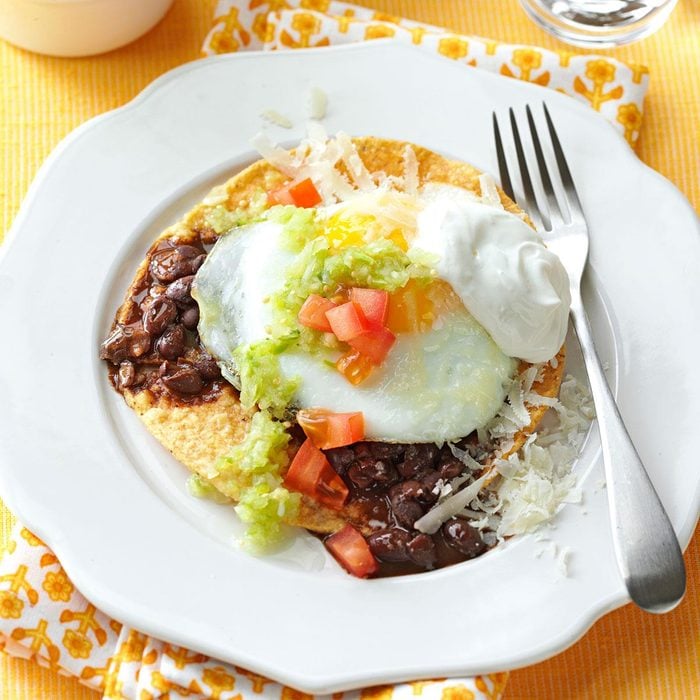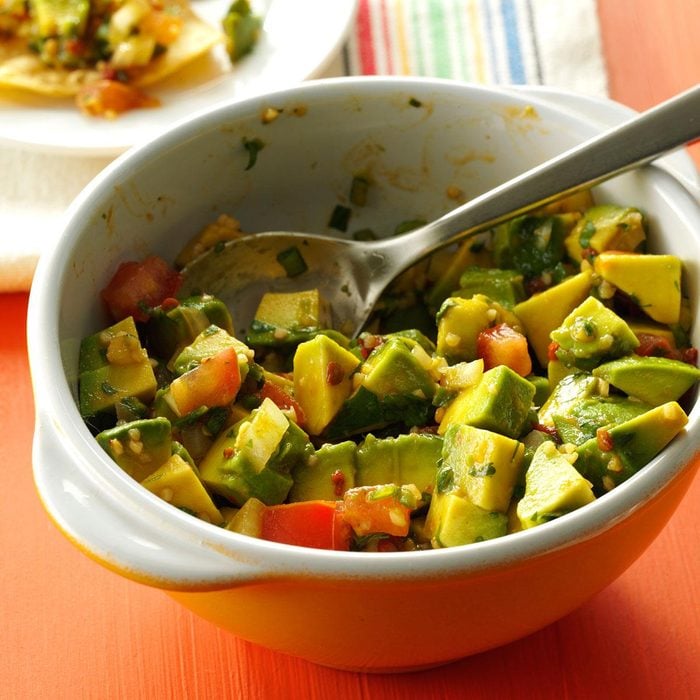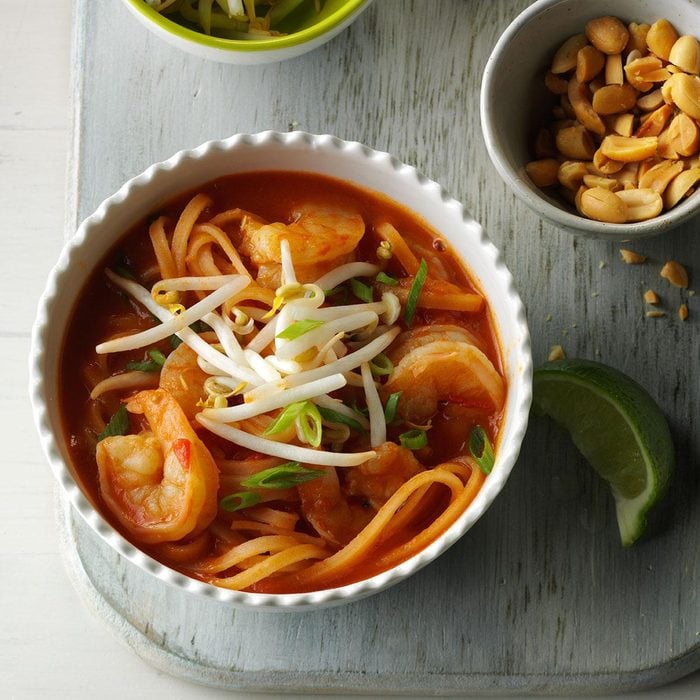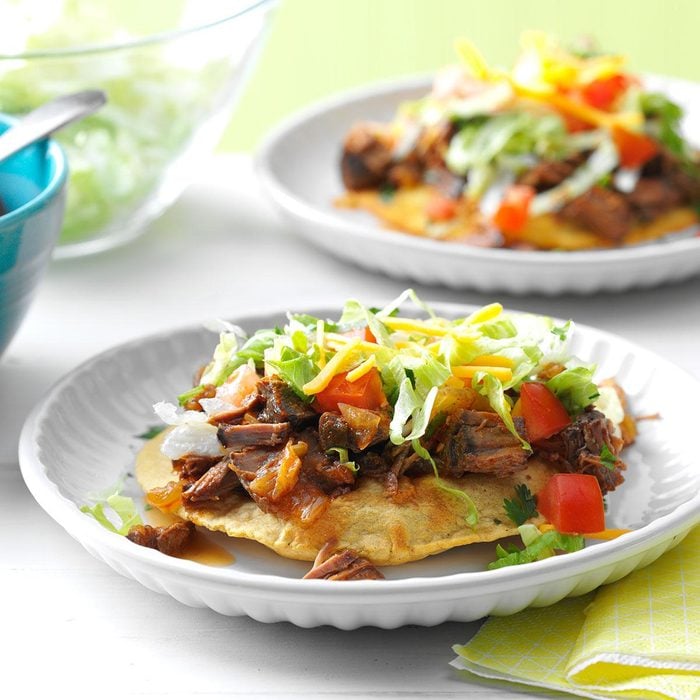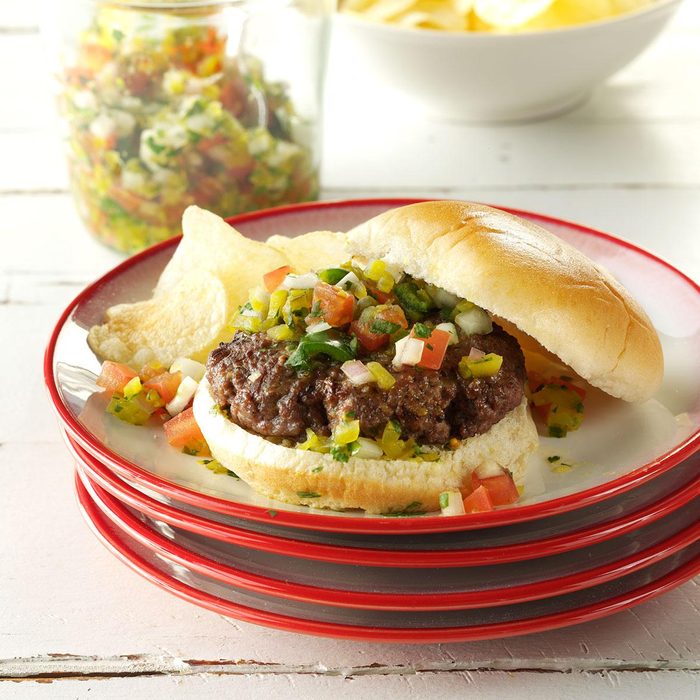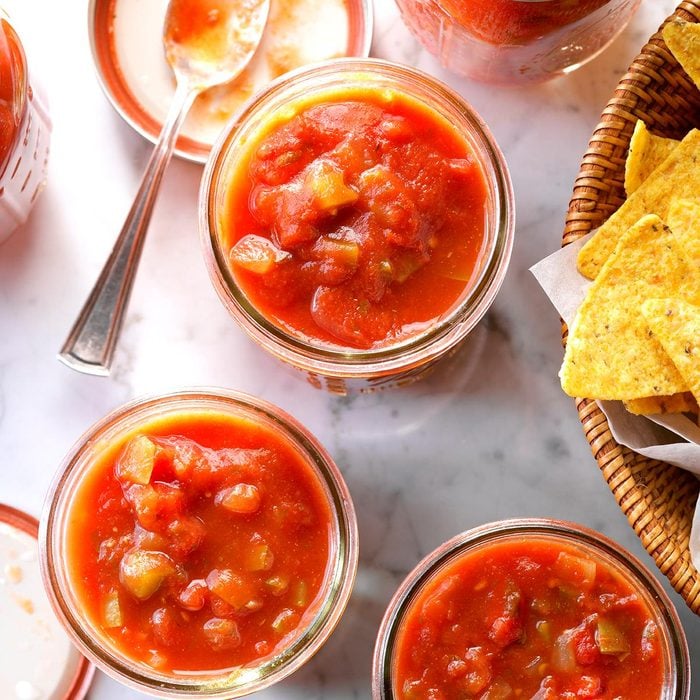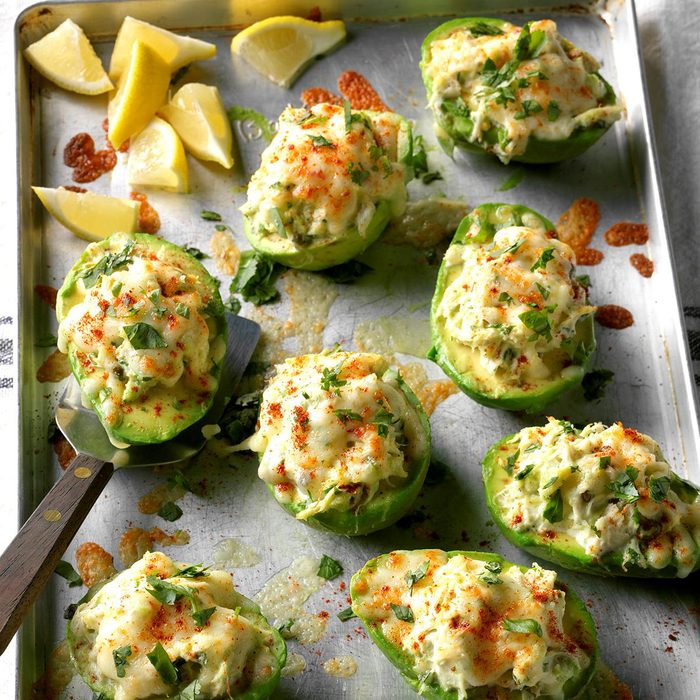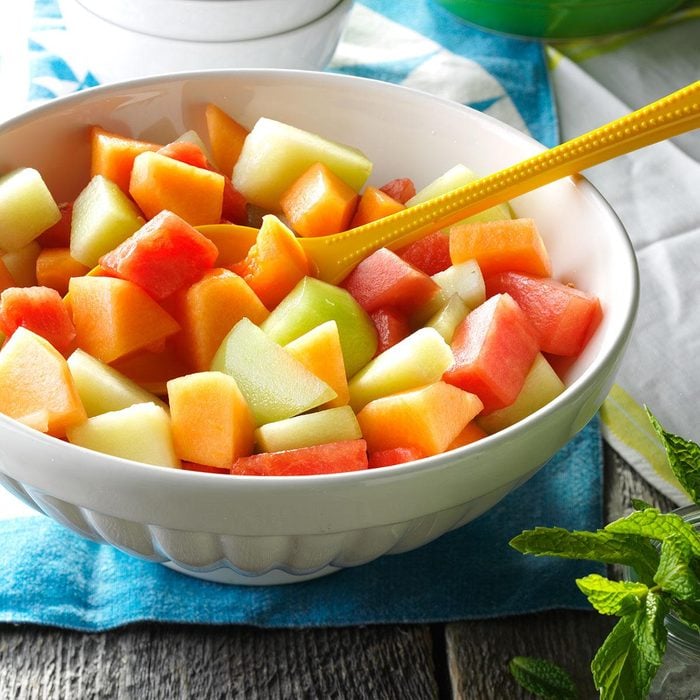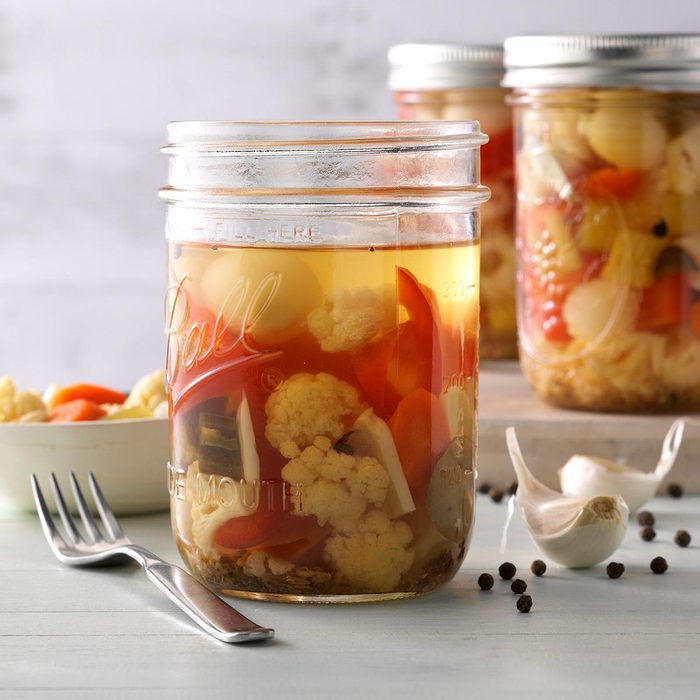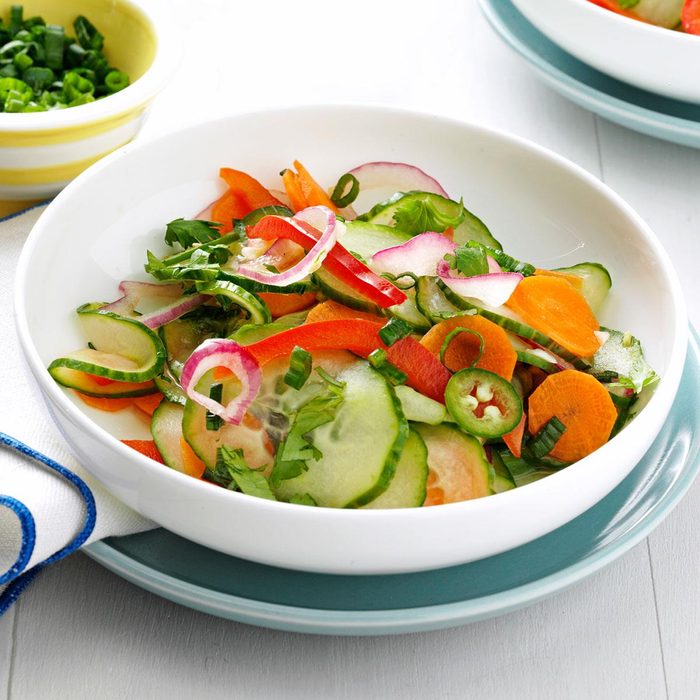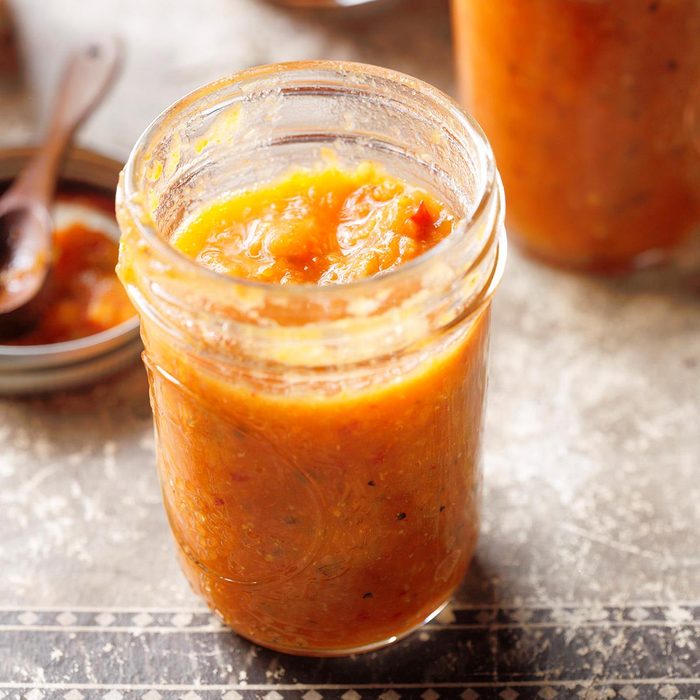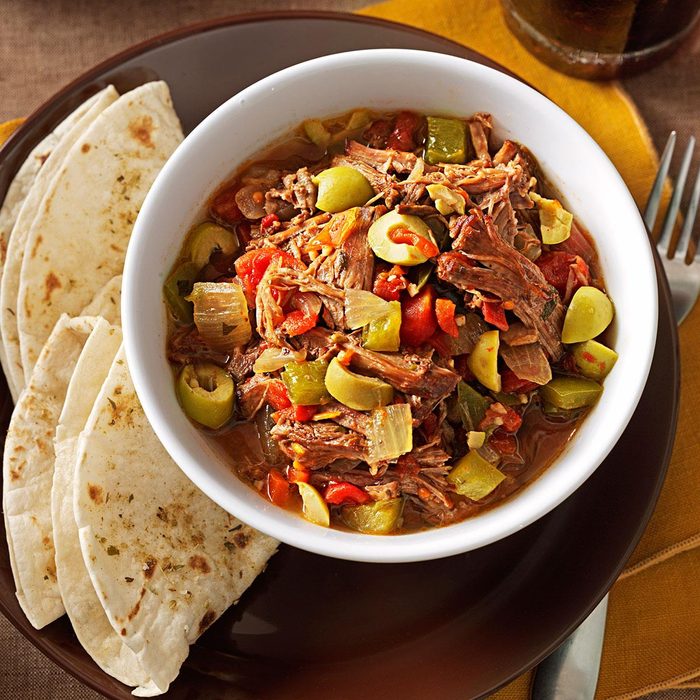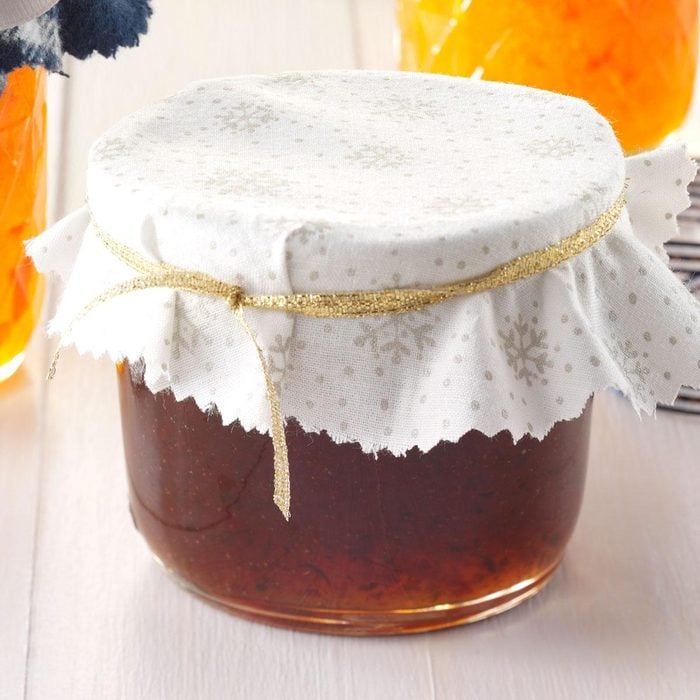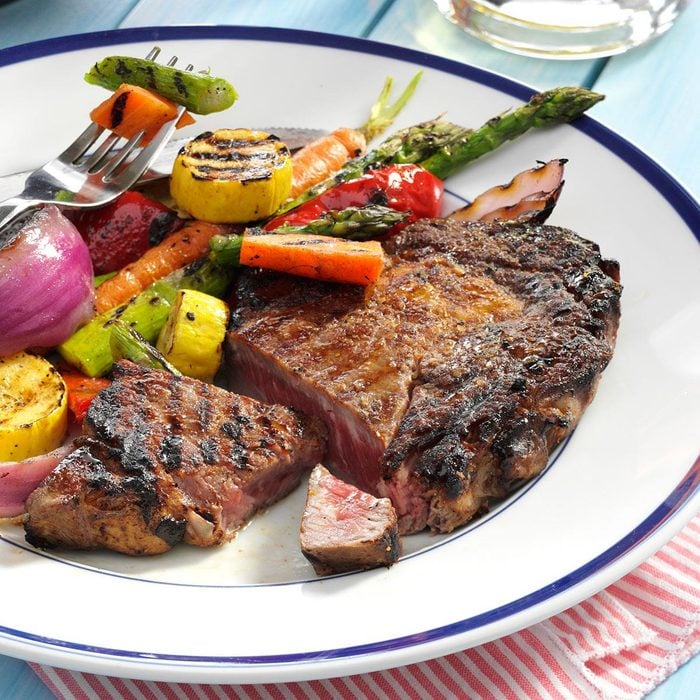There are thousands of different types of peppers, so how do you choose the right one? To make it even more confusing, one pepper variety may have one name when it’s fresh and another when it’s dried. For example, that fresh poblano in your queso fundido is the same pepper as the dried ancho in your chicken mole.
As for heat, you certainly can’t substitute a Scotch Bonnet for an Anaheim and expect the same results!
This guide to need-to-know pepper varieties will help you navigate grocery stores and farmers markets so you’ll pick just the right pepper for your dish—whether you’re looking for mild, medium or flaming hot.
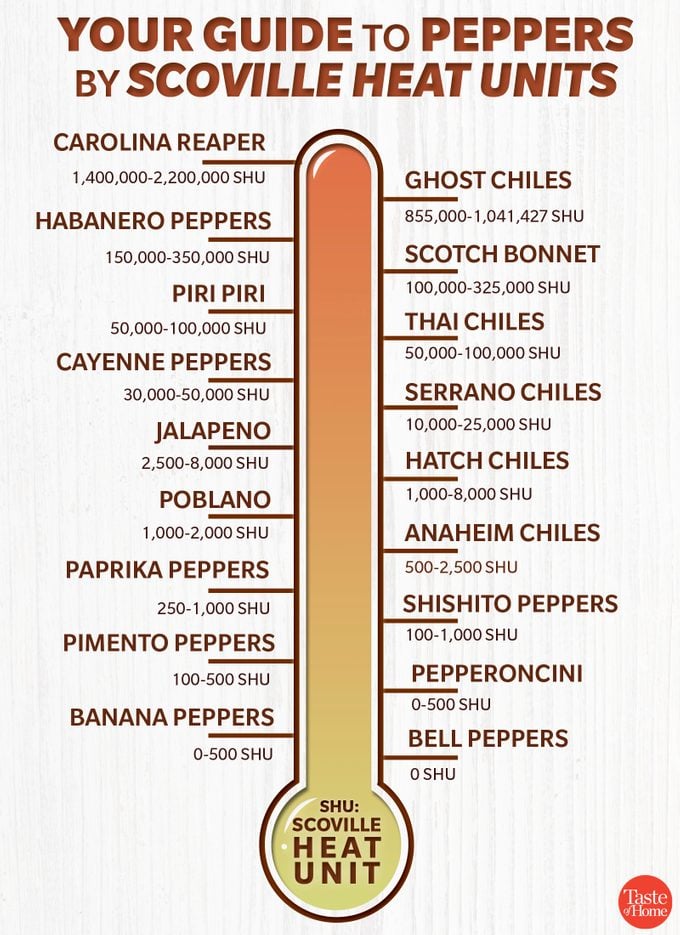 Sydney Watson/Taste of Home
Sydney Watson/Taste of Home
What Is a Scoville Heat Unit?
The most important distinction between peppers is heat. That sensation of heat when eating peppers is due to the chemical capsaicin—the more capsaicin, the hotter the pepper. The heat level (spiciness) of food is measured according to the Scoville Heat Unit scale (based on a method devised by Wilbur Scoville back in 1912). On the scale, peppers have a huge swing—sweet bell peppers rate a zero, while the hottest varieties can score over 1,500,000 Scoville units.
Zero to 4,000 is considered mild; 4,000 to 15,000 is medium; 15,000 to 50,000 is hot; much past 50,000 and you may need the fire hose. It might be worth a taste test of different peppers to determine where your heat tolerance lies on the Scoville scale, and then stick to pepper varieties in a range you know you can handle.
Types of Peppers, from Mild to Hot
Bell Peppers
 Amit Basu Photography/Getty Images
Amit Basu Photography/Getty Images
Scoville units: 0
Length: 3-6 in.
Bell peppers have a sweet, mild flavor and are available in green, red, yellow, orange and sometimes purple and brown. Green peppers have a grassier taste. The orange variety is a bit less flavorful than the red. Bell peppers have thick flesh, are crunchy and juicy, and are often eaten raw, sauteed, roasted or stuffed. Here’s a tip: Look at the bottom of the bell pepper and count the lobes. If it has four lobes it’s a female pepper, which produces more seeds and is sweeter than a male pepper, making it a good choice for crudites or chopping into salads. Three lobes, and it’s a male—a great choice for roasting and making stuffed peppers.
Also, if you’re guilty of buying more peppers than you need, learn how to freeze bell peppers.
Our Favorite Bell Pepper Recipes
Mexican Stuffed Peppers
This nutritious yet economical summer meal makes the most of my home-grown peppers. I like to top it with sour cream and serve with tortilla chips and salsa, but it’s wonderful on its own, too. —Kimberly Coleman, Columbia, South Carolina
Go to Recipe
Roast Beef with PeppersThis moist, flavorful entree gets a bit of Italian flair from oregano and garlic. The sauteed peppers not only are a fresh-tasting accompaniment to the meat but look beautiful arranged on a platter around the sliced roast. —Jeanne Murray, Scottsbluff, Nebraska
Also, if you're guilty of buying more peppers than you need, learn
how to freeze bell peppers.
Israeli Pepper Tomato SaladThis Israeli salad, which is traditionally eaten at breakfast, lends itself to endless variety. You can add foods like olives, beets or potatoes. —Sandy Long, Lee's Summit, Missouri
Quick Roasted Red Pepper SpreadThis red pepper spread is easy to make and can be used in many ways! It's amazing on top of grilled meats, mixed into a hearty stew for extra flavor, stirred into cream to make a rich pasta sauce, or combined with mayonnaise as a sandwich condiment. It's one of the bell pepper recipes I make on repeat. I keep this spread on hand: By freezing it in small portions, I can remove exactly the amount needed for each use. —Josh Rink,
Taste of Home Food Stylist
Sheet-Pan Shrimp FajitasI love easy weeknight dinners like this. These sheet-pan shrimp fajitas come together so quickly and are customizable with your favorite toppings. —Carla Hubl, Hastings, Nebraska
Italian Sausages with ProvoloneHere’s an easy recipe everyone will rave about. These tangy sausages with their pepper and onion topping will go quickly. Better make a double batch! —Shelly Bevington-Fisher, Hermiston, Oregon
Sausage and Pepper Sheet-Pan SandwichesSausage with peppers was always on the table when I was growing up. Here's how to do it the easy way: Just grab a sheet pan and the ingredients, then let the oven do the work. —Debbie Glasscock, Conway, Arkansas
Heirloom Tomato & Zucchini SaladTomato wedges give this salad a juicy bite. It's a great use of fresh herbs and veggies from your own garden or the farmers market. —Matthew Hass, Franklin, Wisconsin
Fajita in a BowlPull out the skewers and take a stab at grilling peppers, onions and corn for an awesome steak salad that’s all summer and smoke. —Taste of Home Test Kitchen, Milwaukee, Wisconsin
Veggie-Packed StrataThis is a wonderful, colorful casserole that everyone enjoys. I'm sure you'll be hooked on it after one bite, too. —Jennifer Unsell, Vance, Alabama
Rainbow Pepper AppetizersBell pepper recipes are perfect for appetizer. They're colorful and crunchy. —Marion Karlin, Waterloo, Iowa
Pressure-Cooker Fabulous FajitasWhen friends call to ask for new recipes to try, suggest these tasty fajitas. Top as you like to add healthy color and extra flavor. —
Taste of Home Test Kitchen
Andouille-Stuffed PeppersGreen peppers in Cajun dishes inspired this recipe. For a healthy choice instead of andouille, substitute chicken sausage, cubed chicken or other protein. —Sarah Larson, Carlsbad, California
Grilled Red Pepper DipWe grill peppers with rosemary and garlic, then blend them with sun-dried tomatoes for a creamy spread to pass with pita chips. It's one of the bell pepper recipes we make all summer. —Donna Alwine, Bloomington, Indiana
Roasted Fennel and PeppersFennel makes for a tasty change of pace in this versatile side that goes nicely with grilled meats. Best of all, it's full of flavor and easy to do—and it doesn't seem light at all! —
Taste of Home Test Kitchen
Pickled Bell PeppersWell received at potlucks, these colorful sliced peppers add zest to the menu—and they're a smart way to use peppers from the garden. I also like to make them as a zippy side for lunch or dinner at home. —Heather Prendergast, Sundre, Alberta
Sweet Pepper SkilletIf you're looking for tasty sweet pepper recipes to go with spaghetti or meat loaf, this is it. The easy pepper medley is a snap to saute on the stovetop. —Sundra Hauck, Bogalusa, Louisiana
Roasted Cauliflower & Red Pepper SoupWhen cooler weather comes, soup is one of our favorite meals. I developed this recipe for my husband and me. I wanted it to be a healthier version of all the cream-based soups out there. After a bit of trial and error, this is the keeper. —Elizabeth Bramkamp, Gig Harbor, Washington
Moist Red Pepper CornbreadThe name of this recipe says it all—except how perfect they are for scooping up that last drop of soups and stews! —Katherine Thompson, Tybee Island, Georgia
Roasted SalsaMake the most of fresh tomatoes with this roasted salsa recipe. It's so hearty, you might find yourself eating it right out of the bowl with a spoon!
Sausage and Blue Cheese Stuffed PeppersThis family favorite combines some of our most-enjoyed ingredients: sausage, blue cheese and sweet peppers. The ease of preparation and slow-cooker convenience make this a go-to meal for busy weeknights. —Peggy Mehalick, Mountain Top, Pennsylvania
You may also want to try this recipe for
air-fryer stuffed peppers.
Zucchini Crust PizzaMy mother-in-law shared the recipe for this unique pizza with me. It's just right for brunch, lunch or a light supper. Loosen the nutritious zucchini crust from the pan with a metal spatula. —Ruth Denomme, Englehart, Ontario
Roasted Peppers and CauliflowerCaramelization really enhances the flavors in this easy side dish. The seasoned, roasted peppers and cauliflower are just right with nearly any main course. —Cheryl Wilt, Eglon, West Virginia
Roasted Red Pepper TapenadeWhen entertaining, I often rely on my pepper tapenade recipe because it takes only 15 minutes to whip up and pop in the fridge. Sometimes I swap out the almonds for walnuts or pecans. —Donna Magliaro, Denville, New Jersey
Red Pepper SoupWhile I don't have scientific proof of it, Red Pepper Soup works for me as a head cold remedy! It is a good gift to take when visiting a sick friend, too. For a pretty touch, top the soup with grated cheese and parsley. We enjoy it with jalapeno cheese buns. You can also serve it with warm garlic bread. —Barb Nelson, Victoria, British Columbia
Summer Bounty RatatouilleMake use of your garden's surplus with this comforting dish from the Provence region of France. It's a vegetable dish traditionally made with eggplant, tomatoes, onions, zucchini, garlic, bell peppers and various herbs. I highly recommend accompanying it with some freshly baked bread. —Phyllis Jacques, Venice, Florida
Mahi Mahi & Veggie SkilletCooking mahi mahi with a mix of vegetables may seem complex, but I developed this skillet recipe to bring out the wow factor without the hassle and fuss. —Solomon Wang, Arlington, Texas
Roasted Red Pepper TrianglesI sandwich full-flavored meats, cheeses and veggies between layers of flaky crescent dough for this sensational treat. We like to have marinara sauce on hand for dipping. —Amy Bell, Arlington, Tennessee
Tangy Cilantro Lime Confetti SaladI love standout salads that burst with flavor—the kind that make you feel as if you're splurging without having to eat that piece of chocolate cake. This is one of my very favorites, and everyone I serve it to loves it as well. —Jasey McBurnett, Rock Springs, Wyoming
Linguine with Broccoli Rabe & PeppersBroccoli rabe is one of my favorite veggies. Since it cooks right with the pasta, you can multitask. Before you know it, dinner is served. —Gilda Lester, Millsboro, Delaware
Turkey-Thyme Stuffed PeppersChloe, my 3-year-old, is a big fan of these healthy peppers, which have a wonderful thyme flavor. She likes to help mix the ingredients and make meals with me. —Jennifer Kent, Media, Pennsylvania
Roasted Red Pepper BreadThese savory loaves are moist, tender and loaded with flavor from grated Parmesan cheese and roasted sweet red peppers. They're fantastic at dinner or as an appetizer. —Cheryl Perry, Hertford, North Carolina
Vegetable & Beef Stuffed Red PeppersI love making this stuffed pepper recipe. It's one of the few ways I can get my husband to eat veggies. Make it meatless by replacing the beef with eggplant and adding more vegetables like mushrooms or squash. You can also replace the rice with barley, couscous or even orzo. —Jennifer Zimmerman, Avondale, Arizona. Learn how to make
old-fashioned stuffed bell peppers.
Unstuffed PeppersIf you like stuffed peppers, you'll love this speedy version. It offers all the comforting flavor of the original, but takes just half an hour. Instead of cooking the instant rice, you can use 2 cups leftover cooked rice if you have it on hand. —Beth Dewyer, Du Bois, Pennsylvania
Grilled Peppers and ZucchiniThis versatile side dish is so simple and quick that I had to share it. Grilling the colorful veggies in a foil packet means one less dish to wash, but I sometimes stir-friy the mixture on the stovetop. —Karen Anderson, Fair Oaks, California
Grilled Cheese & Pepper SandwichesThis is a tasty and wholesome sandwich to make for one or two. It’s a nice twist on a grilled cheese, very tasty and filling and especially good with rye bread. —Arline Hofland, Deer Lodge, Montana
Beef & Pepper SkilletI love Mexican-inspired food. I also enjoy experimenting with recipes like this one and making them healthier—and downright good! —Jenny Dubinsky, Inwood, West Virginia
Roasted Pepper Potato SoupI really enjoy potato soup, and this rich creamy version is different than most I've tried. I like its lemon and cilantro flavors, but you can adjust the ingredients to best suit your family's taste buds. --Hollie Powell of St. Louis, Missouri
Summer Salad by the LakeI came up with this recipe to show appreciation to all the teachers at my son’s school. The dish had to be as special as the teachers, who always go the extra mile for their students. I think this salad did the trick! It's hearty, earthy, sweet and loaded with nothing but good stuff. —Ramya Ramamurthy, Fremont, California
Roasted Vegetable StrataWith the abundance of zucchini my family has in the fall, this is the perfect dish to use some of what we have. Cheesy and rich, the warm, classic breakfast dish is sure to please! —Colleen Doucette, Truro, Nova Scotia
Calico Pepper FrittataFor a dish that fits any meal, you can’t beat the frittata. We add red and green peppers and use the stovetop instead of the oven. —Loretta Kelcinski, Kunkletown, Pennsylvania
Four-Pepper Egg CasseroleMy husband loves peppers, and this colorful breakfast casserole is one of his favorite ways to enjoy them. Cumin and cayenne add mild south-of-the-border spice. —Joyce Moynihan, Lakeville, Minnesota
Chopped Garden SaladThis recipe is always requested by my children for their birthday meal or any other get-together. The flavor combination is so yummy.—Anna Sutherland, Camp, Arkansas
Three-Pepper ColeslawThere are never any leftovers when I make this dish for a picnic, barbecue or any social gathering. —Priscilla Gilbert, Indian Harbour Beach, Florida
Cheese & Red Pepper LatkesThese zesty latkes combine three cheeses with a handful of garlic and a colorful burst of red peppers. —Christine Montalvo, Windsor Heights, Iowa
Steamed Mussels with PeppersUse the French bread to soak up the deliciously seasoned broth. If you like food zippy, add the jalapeno seeds. —Taste of Home Test Kitchen, Milwaukee, Wisconsin
Steak and Shrimp KabobsThese steak and shrimp kabobs make any get-together special. Cubes of marinated steak are skewered with shrimp and veggies, then grilled. For picnics, I assemble the kabobs at home and carry them in a large container. —Karen Mergener, St. Croix, Minnesota
Herbed Harvest Vegetable CasseroleI belong to a cooking club, so I try a lot of new recipes. This one has become one of my favorites. I hope your family enjoys it as much as mine does! —Netty Dyck, St. Catharines, Ontario
Banana Peppers
 bhofack2/Getty Images
bhofack2/Getty Images
Scoville units: 0-500
Length: 2-3 in.
Banana peppers live up to their name in shape and color, although they can change to red or orange as they ripen. Also known as yellow wax pepper, banana peppers have a mild, sweet taste that adds flavor to sandwiches, pizza and Greek salads. Slice one up to use in this recipe for Tex-Mex cheesesteaks. Although they look similar, don’t confuse them with Hungarian wax peppers, which are much hotter.
Our Top 10 Banana Pepper Recipes
Chicken-Stuffed Cubanelle PeppersHere's a different take on traditional stuffed peppers. I substituted chicken for the beef and used Cubanelle peppers in place of the green peppers that are usually featured in such a dish. —Ron Burlingame, Canton, Ohio
Mojito-Style Yellow Tomato SalsaWith grilled tomatoes, crunchy peppers and a sprinkle of mint, this fresh salsa is good on just about everything. Try it in fish tacos, on tortilla chips or by the spoonful! —Patterson Watkins, Philadelphia, Pennsylvania
Pickled Sweet PeppersI love to can my homegrown produce. I call this recipe Summer in a Jar. The peppers have a nice combination of tart and spicy flavors. —Edna Clemens, West Branch, Michigan
Tex-Mex Cheesesteak SandwichesWe adore cheesesteak sandwiches and anything with southwestern flavor, so I combined the two. If you crave even more firepower, add chopped jalapenos. —Joan Hallford, Fort Worth, Texas
Feta Shrimp TacosA unique combination of taco seasoning and feta cheese works remarkably well in these refreshing tacos. It’s a goodthing you get two per serving, because you won’t want to stop at one! —Athena Russell, Florence, South Carolina
Chili Mac and CheeseThis chili mac and cheese combines hearty, spicy chili with mac and cheese. It's a comfort food mash-up!
Deviled Egg SpreadI tried this egg salad at a luncheon and had to have it. I punched it up with pickled banana peppers. It’s a hit with my kids and picky mother. —Lisa Easley, Longview, Texas
Mediterranean Turkey SkilletI've always heard that it’s important to eat a rainbow of colors to get all of the nutrients we need. Thanks to my garden-grown veggies, this dish certainly fits the bill. —Nicole Ehlert, Burlington, Wisconsin
BBQ Chicken Waffle FriesThis is one of those dishes that sounds so wrong but tastes so right! Trust me—barbecue chicken leftovers are fantastic with the fries. We like it with lettuce, tomato and pickle, but you can add almost any toppings you like. —Janet Telleen, Russell, Iowa
Pepperoncini
 LauriPatterson/Getty Images
LauriPatterson/Getty Images
Scoville units: 0-500
Length: 2-3 in.
Also known as sweet Italian or Tuscan peppers, pepperoncini peppers have a mild taste and heat with just a hint a bitterness. They start out green but ripen to red when mature. Pepperoncini are most often pickled when green and add a lovely tang to pizza, salads and antipasto platters.
Here's What to Do with Pepperoncini
Antipasto PlatterWe entertain often, and an antipasto platter is one of our favorite crowd-pleasers. Guests love having their choice of so many delicious nibbles, including pepperoni and cubes of provolone. —Teri Lindquist, Gurnee, Illinois
Spicy Shredded Beef SandwichesIf you like your shredded beef with a little kick, then this recipe is for you. For an even zestier version of this recipe, add another jar of jalapenos or use hot peppers instead of the pepperocinis. —Kristen Langmeier, Faribault, Minnesota
Muffuletta CheesecakeWhen I needed a
party appetizer and couldn’t find a recipe I liked, I created my own. This savory spread boasts the flavors of a classic Italian muffuletta sandwich. —Helen Flamm, Dayton, Ohio
Four-Tomato SalsaThe variety of tomatoes, onions and peppers makes this chunky salsa so good. Whenever I try to take a batch to a get-together, it's hard to keep my family from finishing it off first! It's a super snack with tortilla chips or as a relish with meat. —Connie Siese, Wayne, Michigan
Pickled Pepperoncini Deviled EggsIt's hard to resist these adorable deviled trees on our buffet table. The avocado filling has pepperoncini and cilantro for extra zip. —Carmell Childs, Clawson, Utah
Hot AntipastoMy husband's family requests this colorful appetizer dish for our annual Christmas Eve potluck. Everyone loves that there are so many delicious ingredients to nibble on. It’s a real crowd-pleaser. —Susan Leighton, Portland, Connecticut
Italian Salad with Lemon VinaigretteFor an Italian twist on salad, I mix greens with red onion, mushrooms, olives, pepperoncini, lemon juice and Italian seasoning. Add tomatoes and carrots if you'd like. —Deborah Loop, Clinton Township, Michigan
Chicago-Style Beef RollsI have fond memories of eating these big, messy sandwiches at a neighbor's house when I was growing up. Freeze any extras and save for another meal! —Trisha Kruse, Eagle, Idaho
Mediterranean Turkey PotpiesYour clan will love these wonderful stick-to-the-ribs potpies with a Mediterranean twist. I always use the leftovers from our big holiday turkey to prepare this recipe. I think my family enjoys the potpies more than the original feast! —Marie Rizzio, Interlochen, Michigan
Feta Scrambled Egg WrapsMy daughter jokes that I am so predictable when it comes to dining out. I always order chicken souvlaki. So I thought, why not incorporate my favorite Greek dish into a breakfast wrap? It's healthy, tasty and easy to make.—Mary Jo Kempf, West Seneca, New York
Three-Cheese Pepperoncini SpreadOur big family loves to celebrate with food. Here’s my take on a cheesy Greek spread known as Kopanisti. We serve it with pita crisps or crackers. —Michael Hall, Goodland, Indiana
Family-Favorite Italian Beef SandwichesWith only a few ingredients, this roast beef is a snap to throw together. And after cooking all day, the meat is wonderfully tender. —Lauren Adamson, Layton, Utah
Philly Cheesesteak Won Ton CupsI love the versatility of wonton wrappers. You can fill them with any mix of flavors or ingredients to suit your tastes. The first batch of these cups I tried with a Mexican-inspired filling, which was delicious. But this fun version is a spinoff of Philly cheesesteak, one of my favorite sandwiches. —Cyndy Gerken, Naples, Florida
French Dip TacosI came up with this idea when we had a dab of leftover French dip. So much fun and a nice twist to leftovers. These are also good with a little hot sauce on the side! —Kelly Williams, Forked River, New Jersey
Italian Fresh Vegetable SaladGarden-fresh veggies are a hit at community potlucks. I carry the dressing in a mason jar to add just before serving. — Jeanette Hildebrand, Stafford, Kansas
Slow-Cooker Meatball SandwichesOur approach to meatball sandwiches is a simple one: Cook the meatballs low and slow, load them into hoagie buns, and top them with provolone and pepperoncini. —Stacie Nicholls, Spring Creek, Nevada
Honey-Mint Lamb SkewersMy hearty lamb bites are delicious and convenient. Assemble them the day before, then pop them under the broiler when the party starts. —Trisha Kruse, Eagle, Idaho
Italian Sirloin Beef SandwichesAfter a hectic day, our family loves coming home to the inviting smell of Italian beef wafting from our slow cooker. The broth makes a perfect au jus. —Keith Sadler, Oran, Missouri
Pimento Peppers
 S847/Getty Images
S847/Getty Images
Scoville units: 100-500
Length: 3-4 in.
You’re probably most familiar with these peppers stuffed into green olives. Pimento is a large, sweet red pepper similar to a bell but with an extra-thick, juicy wall. That makes them a great dipper for dill vegetable dip. They’re also a wise choice for roasting because the skin comes off more easily than other varieties.
Shishito Peppers
 bhofack2/Getty Images
bhofack2/Getty Images
Scoville units: 100-1,000
Length: 2-4 in.
This pepper is popular in Japan, where it is often fried, drizzled with sesame oil and soy sauce, and eaten as an appetizer. Shishito peppers are thin-walled with a mild, slightly sweet flavor and also make a tasty addition to tempura.
Paprika Peppers
 Oscar Sánchez Photography/Getty Images
Oscar Sánchez Photography/Getty Images
Scoville units: 250-1,000
Length: up to 8 in.
This large, cone-shaped pepper originally from Hungary is most often ground and used as powder. The pepper is readily available in grocery stores in powder form with mild heat. Sometimes the peppers are smoked before being ground—smoked paprika has a strong, outdoorsy flavor perfect for dry rubs and barbecue spice. Many cooks like to sprinkle paprika on top of their deviled eggs.
Anaheim Chiles
 SageElyse/Getty Images
SageElyse/Getty Images
Scoville units: 500-2,500
Length: 5-6 in.
These large, mild peppers with a curved, tapered shape are incredibly versatile—they make great salsa, are wonderful stuffed and are often used as a substitute for poblano peppers. They’re generally mild enough for family dishes, although those grown in New Mexico can be hotter than those grown in California. Anaheim peppers are a mild form of a Hatch chile and are a key ingredient in this Anaheim chicken tortilla soup.
Poblano Peppers
 Edgar Cervantes/Getty Images
Edgar Cervantes/Getty Images
Scoville units: 1,000-2,000
Length: 4-5 in.
Poblano peppers are the ultimate pepper for grilling and stuffing because of their thick walls and mild, earthy flavor. They’re generally sold fresh, young and dark green, but once ripened and dried, they’re called ancho peppers and hold much more heat. Prevalent in Southwestern and Mexican cuisine, poblanos are the go-to pepper for the ever-popular chiles rellenos.
For a twist, try them in chicken-chile relleno tacos.
Here's What to do with Poblano Peppers
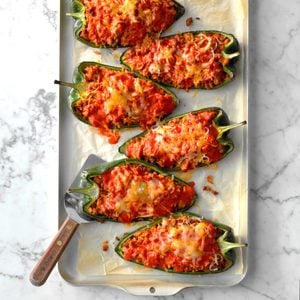 Taste of Home
Taste of Home
My partner adores these saucy stuffed peppers—and I love how quickly they come together. Top with low-fat sour cream and your favorite salsa. —Jean Erhardt, Portland, Oregon
Go to Recipe
Easy Tamale Pie with PeppersMy family loves anything with southwestern flavor, so this recipe is a big hit. It's super quick and easy to prepare, and cleanup afterwards is fast because everything cooks in one dish. —Joan Hallford, North Richland Hills, Texas
Grilled Ribeyes with Hatch Chile ButterIn summer, succulent ribeye steaks call for my flavor-packed compound butter, swirled with Hatch chiles, cilantro, lime juice and garlic. —David Ross, Spokane Valley, Washington
Grilled Potato and Corn SaladCorn salad and potato salad are two summer classics. I smashed them together for a crowd-pleasing side that we love with burgers. Locally sourced ingredients from the farmers market make it extra special. —Donna Gribbins, Shelbyville, Kentucky
Veggie EnchiladasThese vegetarian enchiladas use a lot of garden favorites in a quick weeknight meal. Feel free to substitute with whatever vegetables you have from your garden: yellow summer squash, eggplant and corn—all taste great! —Elisabeth Larsen, Pleasant Grv, Utah
Slow-Cooker Chipotle Beef CarnitasI came up with this beef carnitas recipe while trying to figure out what I could do with a pot roast that had been in the freezer. Now I keep the rub in a plastic bag, ready and waiting in my cupboard, and I can get the roast in the slow cooker in less than 15 minutes. —Ann Piscitelli, Nokomis, Florida
Garden Vegetable CornbreadWhen I was a kid, my parents would make cornbread for my siblings and me. We would slather butter and maple syrup over the warm bread—it was delicious. Today I experiment a lot with recipes, just as my grandma and mom did, and that's how my version of their easy cornbread recipe was born! —Kim Moyes, Kenosha, Wisconsin
The Best ChiliMy dad and father-in-law are the gurus in our chili-loving clan. But after my honeymoon to New Mexico, where I was inspired by the fresh and fragrant chile peppers at the Santa Fe farmers market, I felt it was time to introduce them to my spicy, meaty version with a touch of masa harina, dubbed the best chili recipe. —Sarah Farmer,
Taste of Home Culinary Director
Zucchini Pico de Gallo SalsaI love veggies and fresh ingredients this time of year. I make big bowls of this salsa, which we eat with pretty much everything in the summer when tomatoes are bountiful. My kids love it, though I leave out the jalapeno when making it for them. —Amy Gattuso, Madison Heights, Michigan
47 Best Leftover Turkey RecipesThere's no better way to enjoy Thanksgiving extras than with these delicious leftover turkey recipes. With these easy recipes, you'll never wonder what to do with leftover turkey again.
Fiery Stuffed PoblanosI love Southwest-inspired cuisine, but the dishes are often unhealthy. As a dietitian, I try to come up with nutritious twists on recipes, which is how my stuffed peppers dish was born. —Amber Massey, Argyle, Texas
Chicken Verde QuesadillasI used the corn, peppers and zucchini in my fridge to create these quick and easy quesadillas. Dollop with sour cream and you're good to go. —Julie Merriman, Seattle, Washington
Slow-Cooked Chicken Enchilada SoupThis crockpot chicken enchilada soup is inspired by the Mexican dish and loaded with southwestern flavors from poblano peppers and enchilada sauce to juicy shredded chicken.
Spicy Pork Chili VerdeMy pork chili is brimming with poblano and sweet red peppers for a hearty kick. Serve it with sour cream, Monterey Jack and tortilla chips. —Anthony Bolton, Bellevue, Nebraska
Pepper Mango SalsaWhenever I make this, the bowl is always left empty! The idea for a homemade mango sauce hit me after I saw a chef on television make something similar. It sounded so good, and it wasn't something I could find in a store at the time. The salsa is especially tasty served with artisan chips —the black bean and roasted garlic ones are my favorite. When strawberries are in season, I add them into the mix, too. —Wendy Rusch, Cameron, Wisconsin
Beef-Wrapped Stuffed PeppersWe love Mexican flavors and spicy foods––and this recipe has it all. Try serving our flank steak-wrapped peppers with rice, beans and sour cream.—Jane Whittaker, Pensacola, Florida
Roasted Vegetable and Chevre QuicheRoasting the veggies in this rich yet bright quiche intensifies their flavors. The addition of fresh goat cheese lends a wonderful creamy tanginess. —Laura Davis, Chincoteague, Virginia
Carrot and Kale Vegetable SauteThanks to fresh veggie dishes like this one, I almost forget I'm wheat- and gluten-free. Bacon adds another layer of flavor and depth to this gorgeous side dish. —Darla Andrews, Schertz, Texas
Mexican Chorizo and Corn SoupThis filling soup is fantastic when you need to warm up on a blustery day! If you want a chowder consistency, use a potato masher to break down some of the spuds. —Laura Davis, Chincoteague, Virginia
Dinner PoppersI could eat jalapeno poppers all day long, but who wants to say they had seven stuffed peppers for dinner? For this meal-in-one, I use poblanos for my husband and son, and hotter peppers for my daughter and me. —Sherri Jerzyk, Tucson, Arizona
Grilled Flank Steak with Summer RelishMy garden produces a nice harvest of tomatoes, scallions, corn, garlic and poblanos, so that's what I use to make relish for this tasty steak. —Brenda Washnock, Negaunee, Michigan
Chiles Rellenos Grilled Chicken TacosA local restaurant makes awesome charred tacos that are a lot like these. Their marinade recipe’s a secret, so I invented my own. Light the coals and have them anytime. —Denise Klibert, Shreveport, Louisiana
Chili-Stuffed Poblano PeppersWhile exploring Mexican restaurants, I tasted chiles rellenos and wanted to make them at home. My husband and I teamed up to create this stuffed poblano peppers recipe, which is one of our favorites. —Lorrie Grabczynski, Commerce Township, Michigan
Grilled Southwestern Steak SaladPasta salad loaded with steak, peppers and onions makes both my boyfriend and me happy. Plus, it’s versatile! We serve it hot, room temperature or cold. —Yvonne Starlin, Westmoreland, Tennessee
Summer Garden Fish TacosI like to serve fish tacos with quinoa and black beans for a complete and satisfying meal. If you’ve got them, add colorful summer toppings like bright peppers, green onions or purple carrots. —Camille Parker, Chicago, Illinois
Bloody Mary Soup with BeansI love a good Bloody Mary, which inspired this recipe. The soup packs a spicy punch, and it'll warm you right up on a chilly day. —Amber Massey, Argyle, Texas
Queso FundidoDig in to this one-skillet dip and enjoy the gooey cheese and the spicy kicks from chorizo and pepper jack. —Julie Merriman, Seattle, Washington
Zucchini Salsa VerdeThis is the best green salsa ever; it's bright and sweet with just the right hint of spice. —Donna Kelly, Provo, Utah
Black Bean, Chorizo & Sweet Potato ChiliChili is one of my all-time favorite dishes. This recipe takes chili to the next level by changing up the flavors and adding a surprise—sweet potatoes. —Julie Merriman, Cold Brook, New York
Grilled Southwestern Potato SaladThis salad is perfect with a grilled steak for a Tex-Mex meal, and most of it can even be prepared out in the backyard. Poblanos and cayenne make it pop. —Johnna Johnson, Scottsdale, Arizona
Hatch Chiles
 Aleksandr Zubkov/Getty Images
Aleksandr Zubkov/Getty Images
Scoville units: 1,000-8,000
Length: 4-12 in.
Hatch chiles are grown in New Mexico’s Hatch Valley and have been cultivated by New Mexico State University for more than a century. There are so many subvarieties that heat level and size can range dramatically. With a much earthier flavor than similar chiles, Hatch chiles have a delicious, smoky, buttery taste when roasted, and they’re used in both savory and sweet applications (like this amazing peach pie). Because their season is so short—six weeks from August to September—they are often roasted and frozen to be used later in the year. They can be found in upscale grocery stores during the season or in canned and powdered form outside the growing season.
The Hottest Peppers
Jalapeno Peppers
 Michelle Arnold / EyeEm/Getty Images
Michelle Arnold / EyeEm/Getty Images
Scoville units: 2,500-8,000
Length: 2-3 in.
Poppers, anyone? Jalapenos are the most popular pepper around for appetizers, salsa and any dishes where you want a manageable but noticeable kick. Harvested green or red (red is a touch sweeter), jalapenos once dried and smoked are called chipotle chiles. The spice level can vary greatly from pepper to pepper, so you may want to test a bite first. Most of the heat is concentrated in the membranes, so remove them if you want to reduce the fire.
Ways to Cook with Jalapenos
Jalapeno Popper Spread
I've been told by fellow partygoers that this recipe tastes exactly like a jalapeno popper. I like that it can be made without much fuss. —Ariane McAlpine, Penticton, British Columbia
Go to Recipe
Sweet & Spicy Jalapeno PoppersThere’s no faster way to get a party started than with these bacon jalapeno poppers. Make them ahead and bake just before serving. Even the those who are intolerant of hot peppers will love them. —Dawn Onuffer, Crestview, Florida
Jalapeno Mac and CheeseMany years ago after I had had knee surgery, a friend brought me a big casserole of mac and cheese along with the recipe. I have fiddled with the recipe over the years, most recently adding jalapenos at the request of my son. What an awesome spicy twist! —Teresa Gustafson, Elkton, Maryland
Jalapeno Swiss BurgersMexican culture greatly influences our cuisine, and we eat a lot of spicy foods. In this recipe, the mellow flavor of Swiss cheese cuts the heat of the jalapenos.—Jeanine Richardson, Floresville, Texas
Chicken with Creamy Jalapeno SauceMy sister Amy came up with this recipe that makes standard chicken breasts a lot more exciting. My husband and I just love the wonderful sauce. —Molly Cappone, Lewis Center, Ohio
Creamy Jalapeno CornThis comforting and creamy corn side dish is appealing to almost everyone. It gets its spicy kick from jalapeno peppers.—Judy Carty, Wichita, Kansas
Smoky JalapenosWhen I make these bacon-wrapped appetizers, there are no leftovers. They can also be made with mild banana peppers or yellow chili peppers. —Melinda Strable, Ankeny, Iowa
Peachy Jalapeno GuacamoleFresh jalapenos and summer-ripe peaches give this creamy guacamole so much flavor. It's got a little kick, but I love that it's not so spicy it burns off my taste buds! —Colleen Delawder, Herndon, Virginia
Jalapeno Popper Corn SaladI created this recipe for a wedding I was catering, and it's a good thing I made buckets of it, because I couldn't stop eating it! This chilled creamy salad combines all the best flavors of jalapeno poppers with the delicate sweetness of fresh corn. —Amanda Miller, Hutchinson, Kansas
Jalapeno & Cotija Cheese Potato Stack PiePie isn't just for dessert anymore. Stacking thinly sliced potatoes with layers of minced jalapenos and crumbled Cotija cheese helps turn ordinary spuds into something truly spectacular—especially when served with salsa and sour cream. —Colleen Delawder, Herndon, Virginia
Creamy White ChiliYears ago, as a time-starved college student, I got this wonderful recipe from my sister-in-law. She had made a big batch and served it to a crowd one night. It was a hit—and easy and quick. In all my years of cooking, I’ve never had another dish get so many compliments. —Laura Brewer, Lafayette, Indiana
Nacho ChickenI have been serving this rich and zippy chicken casserole for years, and it's a favorite of my family and friends. It disappears quickly at bring-a-dish gatherings, too. —Thom Britton, Three Rivers, Michigan
Fiesta Scrambled EggsI love to fix this spicy scrambled egg dish for friends and family. It’s almost a meal in itself, but I serve it with muffins or biscuits, fresh fruit juice and coffee. —Kay Kropff, Canyon, Texas
Sweet 'n' Tangy Chicken WingsI love the convenience of slow-cooker recipes for get-togethers. Start these sweet and sour chicken wings a few hours ahead of time and you'll have fantastic appetizers ready when your guests arrive. —Ida Tuey, South Lyon, Michigan
Fresh Fruit SalsaThis salad has all the bright colors and fresh flavors of summer. —Mary E. Relyea, Canastota, New York.
Southwestern Turkey BakeI make this turkey bake as a way to get my husband and nieces to eat their vegetables. It's also perfect if you're wondering what to do with leftover turkey. This creamy entree will fill you up fast. —Crystal Kolady, Henrietta, New York
Thai Chicken ThighsThese very tender and moist chicken thighs come with a tangy peanut butter sauce that is irresistible. —Taste of Home Test Kitchen, Milwaukee, Wisconsin
Jalapeno Chicken EnchiladasThese creamy enchiladas are likely to be as popular at your house as they are at mine. I have many requests for this recipe. For weddings, I place the recipe in a nice casserole dish to give as a gift. —Kaylin DeVries, Magna, Utah
Black Bean TartThis colorful dish was a hit at a get-together I had for friends. I served the tart with sour cream on the side, a green salad and crusty bread. —Ellen Papa, Miami, Florida.
Roasted SalsaMake the most of fresh tomatoes with this roasted salsa recipe. It's so hearty, you might find yourself eating it right out of the bowl with a spoon!
Spicy French DipIf I'm cooking for a party or family get-together, I can put this beef in the slow cooker in the morning and then concentrate on other preparations. It's a timesaver that never fails to get rave reviews. —Ginny Koeppen, Winnfield, Louisiana
Buffalo Wing PoppersThese buffalo chicken poppers combine the flavor of hot wings and jalapeño appetizers to make a snack greater than the sum of their parts. —Barbara Nowakowski, Mesa, Arizona
Jalapeno Ranch DipRanch dressing got its start on a real dude ranch in California. Punch up the western original with green salsa, green chiles, jalapenos and cilantro for more color and spice. Serve the dip along with your favorite wings to feed a crowd. —Lindsay Duke, Goodrich, Texas
Spicy Shrimp & Crab CocktailThis seafood starter is so good that it makes me love a food I usually don't—radishes! This recipe also calls for spicy V8, but Zing Zang Bloody Mary Mix works just as well. Serve the cocktail straight up, with tortilla chips or on a bed of butter lettuce. —Heidi Knaak, Liberty, Missouri
Black Bean, Chorizo & Sweet Potato ChiliChili is one of my all-time favorite dishes. This recipe takes chili to the next level by changing up the flavors and adding a surprise--sweet potatoes. —Julie Merriman, Cold Brook, New York
Jalapeno Popper & Sausage DipMy workplace had an appetizer contest, and I won it with my jalapeno and cheese dip. Every time I take it anywhere, folks empty the slow cooker. —Bev Slabik, Dilworth, Minnesota
Grilled Pork with Avocado SalsaI love the zesty taste of this moist grilled tenderloin. The cumin, avocado and jalapeno give it southwestern flair. It's an easy, elegant way to prepare pork. —Josephine Devereaux Piro, Easton, Pennsylvania
Jalapeno Pepper JellyMy family relishes this jelly served with meat or spread on crackers with cream cheese. It's in hot demand as a gift. —Bev Elliott, Peotone, Illinois
Restaurant-Style SalsaWe're all partial to the chips and salsa at our favorite Mexican joint. Learn how to make salsa at home that's just as good.
Jalapeno Chicken WrapsThese easy appetizers are always a hit at parties! Zesty strips of chicken and bits of onion sit in jalapeno halves that are wrapped in bacon and grilled. Serve them with blue cheese or ranch salad dressing for dipping. —Leslie Buenz, Tinley Park, Illinois
Refrigerator Jalapeno Dill PicklesI’m passionate about making pickles. My husband is passionate about eating them. He's too impatient to let them cure on the shelf, so I found this quick recipe to make him happy. Add hotter peppers if you like. —Annie Jensen, Roseau, Minnesota
Spicy Watermelon SalsaI threw this together after an overzealous trip to the farmers market! My family loved it from the first bite. You can serve it right away but the best flavor is achieved after letting the salsa rest in the refrigerator for a few hours. —Andrea Heyart, Aubrey, Texas
Land of Enchantment PosoleMy family named this spicy soup after our state moniker, “New Mexico, Land of Enchantment.” We usually make it around Christmas when we have lots of family over…and we never have leftovers.
—Suzanne Caldwell
Artesia, New Mexico
Sausage-Stuffed JalapenosIf you like foods that pack a bit of a punch, you’ll love these jalapeno poppers filled
with sausage and cheese. This is one of my favorite recipes for parties. —Rachel Oswald, Greenville, Michigan
Jalapeno Popper BurgersWhat do you get when you combine a jalapeno popper and a classic burger? This fantastic recipe! It takes the essential components of a popper and encases them in a juicy patty for a burst of flavor in every bite. —Jo Davison, Naples, Florida
Tropical GuacamoleFresh pineapple stars in this fruity guacamole that sure hits the spot! Both kids and adults have enjoyed it as a poolside snack or as a satisfying appetizer at a summer barbecue. —Sarah White, Salt Lake City, Utah
Southwestern CatfishCatfish fillets are rubbed with a blend that includes chili powder, cumin, coriander, cayenne and paprika, then topped with homemade salsa. A green salad, garlic bread and baked sweet potatoes round out the meal nicely.
—Bruce Crittenden
Clinton, Mississippi
Tex-Mex Summer Squash CasseroleMild-flavored yellow squash gets a big boost from flavor-packed chiles, jalapenos and red onion. This side dish also works with zucchini. —Tommy Lombardo, Euclid, Ohio
Creole CornbreadCornbread is a staple of Cajun and Creole cuisine. This version is an old favorite, and it really tastes wonderful. I found the recipe in the bottom of my recipe drawer. —Enid Hebert, Lafayette, Louisiana
Corn 'n' Squash QuesadillasGrilled vegetables give these quesadillas their distinctive flair, while cumin and jalapeno peppers add a little zip. —Mildred Sherrer, Fort Worth, Texas
Peppered CornbreadPretty flecks of jalapeno and red peppers peek out from this golden cornbread. It has a mild flavor that appeals to most palates. —Ila Bray, Pelham, North Carolina
Baked Chicken NachosThis chicken nachos recipe is delicious and so simple. Rotisserie (or leftover) chicken keeps it quick, and the seasonings and splash of lime juice lend fantastic flavor. My husband enjoys this snack so much that he often requests it for dinner! —Gail Cawsey, Geneseo, Illinois
Jalapeno Popper Corn CupcakesCream cheese frosting may seem like an unlikely partner for a jalapeno and cornmeal cupcake, but we guarantee the treats are sure to please! —Tina Bellows, Racine, Wisconsin
Marinated Steak & Pepper FajitasThese fajitas are the best, and a much healthier version of the typically pan-fried ones you find in restaurants. I like to serve them in flatbreads instead of tortillas. —Erin Michniacki, Manhattan, Kansas
Grilled JalapenosWhen barbecuing for friends at home, I also use the grill to serve up hot appetizers. These crowd-pleasing stuffed peppers have a bit of bite. They were concocted by my son. —Catherine Hollie, Cleveland, Texas
Chicago-Style Hot GiardinieraI have been living in Chicago for many years and have grown to love the spicy giardiniera served at restaurants. So I developed my own to use at home. We love it on everything from eggs to sandwiches and even pizza! —Andrea Quiroz, Chicago, Illinois
Jalapeno Bean DipThis is the snack my family usually requests. We especially like to make this zippy dip on camping trips because it travels so well. —Lorene Goodwin, Belle Fourche, South Dakota
Smoky Grilled Corn SalsaOur backyard grill is the perfect place to cook up the ingredients for homemade corn salsa. It’s yummy with tortilla chips and as a topping for meat, poultry and fish. —Alicia DeWolfe, Gloucester, Massachusetts
Taylor's Jalapeno PoppersIf you own a barbecue joint like I do, you pretty much dream about barbecue in your sleep. Jalapeno poppers are also one of my favorite appetizers, and this recipe is a great way to combine those foods. They’re very popular on the menu at my restaurant. Try your own variation by stuffing the peppers with cooked chicken or beef. —Taylor Hicks, Birmingham, Alabama
Pickled GrapesNo sour grapes here! Easy to make and even easier to eat, pickled grapes are a versatile way to preserve fruit and add a savory surprise to your dishes.
Autumn Pepper RelishThis colorful relish is a favorite with friends and family because it tastes amazing on just about everything. I like to serve it over cream cheese or a block of sharp cheddar cheese along with crackers or French baguette slices. I also include a jar in gift baskets. —Barbara Pletzke, Herndon, Virginia
Serrano Chiles
 Victor Yee/Getty Images
Victor Yee/Getty Images
Scoville units: 10,000-25,000
Length: 1.5-2.5 in.
Serrano peppers look like a smaller, elongated jalapeno and are a good next step up on the heat scale. Their thin skin doesn’t need peeling, so you can roast them and dice them right into your favorite salsa recipes. While some serranos can be mild, it’s tough to know what you’ll get because they can vary widely in heat.
Here's What to Do with Serrano Peppers
Homemade Spicy Hot Sauce
I created this spicy recipe one day using what I had available from my garden: hot peppers, carrots, onions and garlic. The carrots make this recipe stand out. —Carolyn Wheel, Fairfax, Vermont
Go to Recipe
Zesty Salsa VerdeLast year was the first time I had ever grown tomatillos. They were so abundant that I had enough to eat fresh, give away and freeze for future gatherings. What I didn't expect was how well the salsa would freeze. I do like to add an extra zip by juicing a fresh lime into the salsa after it has thawed. —Kim Banick, Salem, Oregon
Huevos RancherosMy husband and I had huevos rancheros while visiting Cuernavaca, Mexico, and he loved the meal so much he asked me to cook it for him when we got home. My version is suited to my family's preference for sunny side up eggs, but poached or scrambled eggs would be just as tasty. —Cheryl Woodson, Liberty, Missouri
Three-Pepper GuacamoleIf you're serious about guacamole, use a molcajete. The lava stone makes a big difference on the pepper paste and is fun for guests. —Laura Levy, Lyons, Colorado
Spiced Grilled Chicken with Cilantro Lime ButterThis grilled chicken gets a lovely pop of color and flavor from the lime butter—don't skip it! —Diane Halferty, Corpus Christi, Texas
Triple-Sausage Breakfast BakeThis over-the-top breakfast has great flavors—smoky, sweet and spicy. It's a really meaty meal. —Thomas Faglon, Somerset, New Jersey
Shrimp Pad Thai SoupPad thai is one of my favorite dishes, but it is often loaded with extra calories. This soup is a healthier option that has all the flavor of traditional versions. —Julie Merriman, Seattle, Washington
Slow-Cooker Beef TostadasI dedicate these slow-simmered tostadas to my husband, the only Italian man I know who can’t get enough of Mexican flavors. Pile on your best toppings. —Teresa DeVono, Red Lion, Pennsylvania
Shrimp CevicheNot interested in a steamy, hot kitchen for dinner? This no-cook shrimp ceviche is the key to a cool and quick meal.
Burgers with Spicy Dill SalsaWhen I make burgers or hot dogs for boating or barbecues, I do a take-along topping that tastes like relish meets salsa. Pile it on anything! —Valonda Seward, Coarsegold, California
Spicy Chunky SalsaVinegar adds a refreshing tang to this sweet tomato salsa. It's wonderful as is, but for more heat, leave in some hot pepper seeds. —Donna Goutermont, Sequim, Washington
Olive Caprese SaladWhen heirloom tomatoes arrive, feature them with red onions, green olives and a surprising twist-star anise. —Julie Merriman, Seattle, Washington
Sesame Turkey Stir-FryI really like the rich taste of sesame oil in this Thai-inspired dish. If you don't have it, canola oil does the trick, too. To get a similar nuttiness, toss in a handful of sliced almonds before serving. —Kelli Whiting, Fortville, Indiana
Chicago-Style Hot GiardinieraI have been living in Chicago for many years and have grown to love the spicy giardiniera served at restaurants. So I developed my own to use at home. We love it on everything from eggs to sandwiches and even pizza! —Andrea Quiroz, Chicago, Illinois
Avocado Crab BoatsThese boats are wonderful with tortilla chips, beans or rice. You can also cover them, pack them on ice, and take them to a picnic or potluck. Straight from the oven or cold, they're always delicious. —Frances Benthin, Scio, Oregon
Khmer Pickled Vegetable SaladI grew up as a missionary kid in Cambodia, and most of my favorite foods have a Southeast Asian background. Locals love eating this pickled salad for breakfast, but I like it as a side for lunch or dinner, especially with chicken satay. —Hannah Heavener, Belton, Texas
Rainbow Fruit ToastNothing will brighten up your morning more than one of these colorful and tasty toasts. —Shannon Roum,
Taste of Home Food Stylist
Melon with Serrano-Mint SyrupThis is just one of the recipes I developed to take advantage of the fresh mint I grow nearly year-round. The serrano pepper is a nice contrast to the sweetness of the syrup and salad. —Jennifer Fisher, Austin, Texas
GiardinieraSweet and tangy, this Italian condiment is packed with peppers, cauliflower, carrots and other crisp-tender veggies. It’s perfect to offer alongside pickles or olives on a relish tray. —
Taste of Home Test Kitchen, Milwaukee, Wisconsin
Crisp & Spicy Cucumber SaladRice vinegar, sesame oil and cayenne create a sweet-hot Asian flavor that will light up your taste buds! —Alivia Dockery, Jensen Beach, Florida
Barbecue Brats & PeppersWe live in brat country, and this barbecue-style recipe feeds a crowd. The sauce gives it a welcome change from the same old grilled bratwurst. —Maria Zrucky, Kronenwetter, Wisconsin
Shrimp Avocado SaladShrimp avocado salad mixes tender shellfish with fresh vegetables for a cool, protein-filled lunch or easy light dinner.
Cayenne Peppers
 Stan Dzugan/Getty Images
Stan Dzugan/Getty Images
Scoville units: 30,000-50,000
Length: 3-5 in.
While fresh cayenne peppers mature from green to red and are long, skinny, curved and very hot, this variety is usually sold dried and ground. A staple in most kitchens, it lends nice heat to soups, meats and even desserts. If you like heat, try making cayenne pretzels for your next party. And that bottle of red pepper flakes we like on our pizza? It’s usually a combination of peppers, but it’s cayenne that gives it the heat.
Thai Chiles
 Louis-Ortiz/Getty Images
Louis-Ortiz/Getty Images
Scoville units: 50,000-100,000
Length: 1-2 in.
There are 79 separate varieties of Thai chiles, all hot and spicy. A staple of southeast Asian cuisine, Thai peppers add lots of heat to sauces, fish and curries. Most grocery stores carry them in the fresh produce section, or you may find them canned in the international foods section. Get used to their heat with Thai chili sauce in colorful shrimp pad Thai.
Piri Piri
 Zsuzsanna Békefi/Getty Images
Zsuzsanna Békefi/Getty Images
Scoville units: 50,000-100,000
Length: 1-2 in.
The piri piri (or peri peri) is a small, elongated pepper that so closely resembles Thai chiles that they’re often confused, but these peppers have their roots in South America. In the United States, you’re most likely to find this pepper in sauce form—piri piri sauce is a spicy, flavorful pepper and garlic sauce used in all sorts of savory dishes, marinades and wet rubs, including piri piri chicken, a Portuguese answer to jerk chicken.
Scotch Bonnet Peppers
 Beachmite Photography/Getty Images
Beachmite Photography/Getty Images
Scoville units: 100,000-325,000
Length: 1-2.5 in.
The Scotch Bonnet got its name thanks to the resemblance its squashed shape holds to the classic Scottish tam o’ shanter hat. It’s the most popular pepper in the Caribbean—very hot but with an underlying sweetness that lends itself well to that region’s cuisine, particularly in pepper sauce or jerk chicken. Brightly colored yellow, orange or red, Scotch Bonnets are a good substitute for habanero peppers, and they’re a great addition to soups, stews and curries.
Habanero Peppers
 Steve Terrill/Getty Images
Steve Terrill/Getty Images
Scoville units: 150,000-350,000
Length: 2 in.
This little pepper packs a fierce heat that’s complemented by a subtle, fruity flavor. Orange is the most common color, but they can be red, white or brown. Habaneros are particularly good for salsa, hot sauce and jerk recipes. Add zest to grilled pork, chicken or salmon with a topping of jerk-spiced mango pineapple chutney.
Habanero Recipes That Are on Fire!
Homemade Spicy Hot SauceI created this spicy recipe one day using what I had available from my garden: hot peppers, carrots, onions and garlic. The carrots make this recipe stand out. —Carolyn Wheel, Fairfax, Vermont
Habanero Strawberry JamI love spicy and sweet dishes! This tastes excellent layered over a bar of cream cheese and served with crackers, or you can slather it on a toasted English muffin. Yum! —Sarah Gilbert, Aloha, Oregon
Jerk-Spiced Mango Pineapple ChutneyI grew up eating mango, pineapple and spicy food, so enjoy the combination of these flavors. I try to make this chutney during the summer when the fruit is most flavorful and affordable. It's fine to adjust the spiciness according to your liking. You can serve this with any meat, but also with fish, such as salmon.—Sugiyarti Jorgenson, Kodiak, Alaska
Easy Ropa Vieja StewUse your slow cooker for this meaty Cuban classic, which offers bold flavors without a lot of hands-on time. —Denise Nyland, Panama City, Florida
Roast Beef Caribbean StyleThis recipe took first place in the 2011 South Dakota Beef Cook-Off. Cooking the roast uncovered for the first 30 minutes gives it a crusty exterior similar to barbecued brisket, and the flavorful sauce adds just a hint of heat. —Susan Patrick Watertown, SD
Chunky SalsaThis fresh-tasting salsa is wonderfully chunky. If you like it hotter, add more habanero peppers; if you prefer a mild salsa, add fewer or replace with jalapenos.—Dana Hayes, Canton, Ohio
Pomegranate Pepper JellyStirring pomegranate juice into my jalapeno jelly creates a beautiful red version for the holidays. Spread it on crackers, fish or poultry. My husband even uses it as a dip for Mexican food! —Katherine Metz, Sharpsburg, GA
Caribbean Grilled RibeyesI made this mind-blowing steak with my father-in-law in mind. He loved it, and so did everyone else. You can serve it as part of all types of meals, but it's especially good alongside seafood. —De'Lawrence Reed, Durham, North Carolina
Sue’s Spicy Tomato Basil TortelliniA friend remarked about a similar baked tortellini dish at a restaurant, so I wanted to try re-creating it for her at home. My stovetop version makes it weeknight easy. —Cynthia Gerken, Naples, Florida
Ghost Chiles (Bhut Jolokia)
 _jure/Getty Images
_jure/Getty Images
Scoville units: 855,000-1,041,427
Length: 2-3 in.
What can you say about a pepper that is so hot the Indian government has made it into military-grade smoke bombs? At one time the Guinness World Record holder as the hottest pepper around, it has since been eclipsed but is still too hot to handle for many people. You can find bottled ghost pepper sauces, and if you can handle the heat, go for it, but PROCEED WITH CAUTION!
Carolina Reaper Peppers
 _jure/Getty Images
_jure/Getty Images
Scoville units: 1,400,000-2,200,000
Length: 1.5-2 in.
The name should say it all. In November 2013, Guinness World Records named the Carolina Reaper the new official reigning champ in the hottest pepper contest. Developed by Smokin’ Ed Currie in South Carolina, this pepper gives new meaning to the term “flaming hot.” I wouldn’t advise eating it raw, and never handle it with bare hands. Surprisingly, the Carolina Reaper is very flavorful and sweet for a super-hot pepper, so sauces made from it can be tasty if you don’t mind eating something akin to pepper spray.
How to Handle Peppers with Care
In general, the smaller the pepper, the hotter it is. Here’s how to avoid the burning feeling also known as jalapeno hands.
- Hot peppers can cause a severe reaction when they come in contact with bare skin. Always wear gloves, avoid touching your face and eyes, and wash your hands thoroughly after handling.
- If your hands sting after handling peppers, wash them in whole milk or yogurt.
- Contrary to popular belief, the seeds of a pepper don’t actually hold the heat; it’s the white membrane that holds the seeds in place that contains all the capsaicin. If you want to scale back the heat, remove that membrane.
How to Soothe the Hot Pepper Burn
While Cooking
Chile is the hot version of salt—it’s easy to overdo it, so it’s best to start with a little and add to taste as you go. However, just as with an oversalted dish, there a few tricks to tone down the heat.
- Add water or more vegetables to increase the volume of the dish; diluting the capsaicin molecules.
- Add dairy, like cream or yogurt.
- Add something sweet, like honey or sugar, to balance the spiciness.
- Cut the acid. Adding something acidic, like vinegar or lemon juice, will just amp up the heat. In case of a real emergency, try stirring in a little bit of baking soda.
After Eating
If your mouth feels fiery, go for a glass of milk—not water. Milk works to dissolve spicy capsaicin, while water simply spreads it around. And carbonated drinks, such as sodas and fizzy beers, actually heighten the tongue’s sensitivity, so they’re not a relief, either.








































